Aperture's Blog, page 62
January 14, 2021
The Counterculture Collective Who Wanted to Save the Earth
For more than a decade, the filmmaker Matt Wolf has won acclaim for his meticulously crafted documentaries that reveal lost histories through deep dives into media archives. His focus is often on radical outsiders whose projects range from the quixotic to the paranoiac. His first film, Wild Combination: A Portrait of Arthur Russell (2008), is an exploration of the life and work of an avant-garde cellist and disco producer, while Recorder: The Marion Stokes Project (2019) examines the fascinating obsession of its subject, who recorded live television news continuously from 1979 until her death in 2012.
Wolf’s latest film, Spaceship Earth (2020), traces the activities of a counterculture collective known as the Synergists from the 1969 founding of a sustainable ranch in New Mexico through the 1991 launch of Biosphere 2, a staggeringly ambitious attempt to pave the way for human life on Mars and to learn about how to live more sustainably on Earth by building a completely self-enclosed ecosystem inside a glass pyramid in the Arizona desert. Last summer, Wolf spoke to the architect and critic Julian Rose about the uncanny resonance of the Synergists’ efforts to give form to the future.
 Biospherian candidates, 1990
Biospherian candidates, 1990Julian Rose: One of the fascinating things about Spaceship Earth is that the protagonists were obsessively documenting their own work as it progressed, producing countless hours of film and video that captured the projects they pursued. How did you first become aware of all that archival material, and how did your film evolve out of it?
Matt Wolf: My creative process involves searching for archives because I’m drawn toward hidden histories. Most of the preliminary research I do begins on the Internet. In this case, I came across these striking images of eight people in bright-red jumpsuits, looking like the band Devo, standing in front of a glowing glass pyramid, and I genuinely thought they were stills from a ’90s science-fiction film. But I quickly realized that, in fact, this structure was real—it was Biosphere 2—and that those people lived sealed inside of it for two years. And the more I looked into the history of the project, the more byzantine the story became. I learned that it had been the brainchild of this countercultural group called the Synergists, and I went to their commune-ranch in New Mexico called Synergia Ranch. When I arrived, I was brought into this temperature-controlled closet that had hundreds of 16mm films and analog videotapes and thousands of images. I learned that this group had been documenting their activity for nearly half a century, and that the material had never been used or seen.
Rose: The term archival usually suggests material that’s raw or unprocessed, but when I watched the film, I was struck by how highly authored, even artistic, much of the footage is—some of it looks like it could be experimental film or video art. Did that level of authorship complicate your own role as a filmmaker?
Wolf: My filmmaking involves working with personal archives—personal in the sense that they are outside established institutions or are even anti-institutional. I’m often looking at people who pursued complex and multifaceted projects, and they didn’t necessarily represent and explain those projects in ways that were accessible. I want to reappraise their legacies and act as a translator, helping to find the logic and coherence and vision behind this idiosyncratic activity, and to explore how it is often incredibly relevant to the broader world. For this film, the archival footage was literally shot from the perspective of my subjects, so I had a unique opportunity to visually translate their story beyond the flattened coverage in the news media.
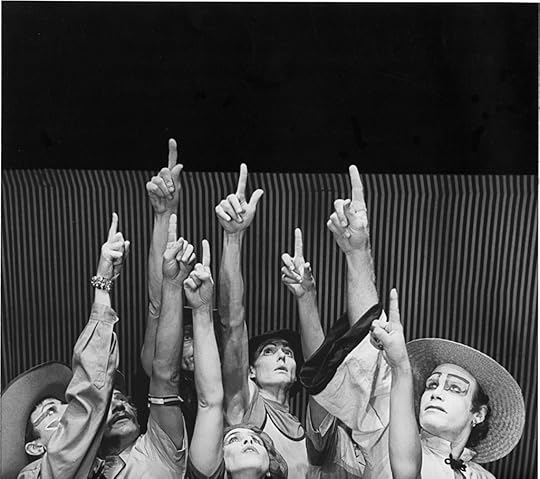 Performance still, Theater of All Possibilities of Synergia Ranch, featuring Biospherians Mark Nelson and Jane Poynter, ca. 1990
Performance still, Theater of All Possibilities of Synergia Ranch, featuring Biospherians Mark Nelson and Jane Poynter, ca. 1990Rose: There’s a fascinating tension that emerges between the footage shot by the subjects themselves and all the contemporary media coverage that you have woven into the film. At the time of the original experiment, Biosphere 2 was widely regarded as a spectacular failure, largely because of the way it was covered in the media. There were tremendous controversies about various technical problems and the ways they were solved—questions about secretly bringing materials into the structure and even pumping oxygen inside.
Do you think the project was seen as a failure because the vision it presented was too radical, too utopian, or simply because the Synergists couldn’t navigate the transition from their own personal documentation of the project to its depiction in the mass media?
Wolf: Well, there are two prongs to that question, one dealing with utopia and one dealing with the media’s impact on the project. The Synergists actually rejected the idea of utopia, primarily because it has historically been so associated with the imaginary and the impractical with failure. In his autobiography, John Allen, who coalesced the group, expresses how, in so many senses, the Synergists tried to create a place that doesn’t yet exist. So what I would say is that the underlying impulse behind this group was futurist rather than utopian.
Rose: But then that vision of the future couldn’t handle all the attention it attracted? The ethos of the project didn’t seem to survive translation into a kind of media spectacle.
Wolf: The title Spaceship Earth is a nod to the theatricality of the project as well as its ambitions. It’s obviously a reference to Buckminster Fuller’s seminal counterculture book, Operating Manual for Spaceship Earth (1969). Fuller was hugely influential for the Synergists. But it is also a nod to the Epcot amusement-park ride called Spaceship Earth, which is a kind of cartoonish sci-fi architecture with animatronic vignettes that depict progress and the future. Biosphere 2 was really this potent mix of countercultural sustainability and theme-park theatrics.
When you pursue a project as ambitious and big as Biosphere 2, it’s inevitable that it is going to attract attention. It became a real mainstream, pop-culture phenomenon. I don’t think this group was equipped with the public-relations skills to manage that. And the experimental dimension of the project, with the eight inhabitants, called the Biospherians, sealed inside of the structure for two years, also stoked the voyeuristic tendencies of the public that later found their expression in reality television shows such as Big Brother and The Real World, and ultimately, of course, Survivor. You can’t separate the way Biosphere 2 was treated in the media from those broader cultural trends. In fact, when The Real World was released, in 1992, the New York Times even called it something like “MTV’s answer to Biosphere 2.”
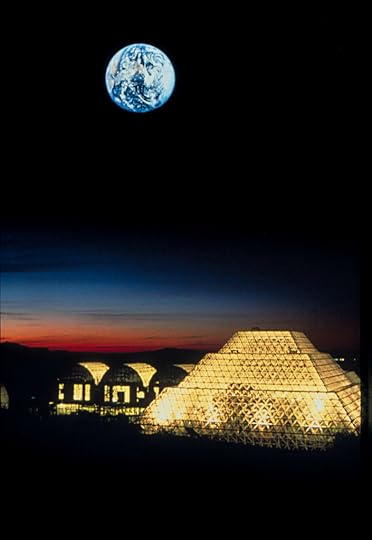 Biosphere 2, 1991
Biosphere 2, 1991Rose: Visually, the physical structure of Biosphere 2 is absolutely stunning— this vast, futuristic complex of crystalline glass prisms rising up out of the empty desert. But was the architecture part of the problem precisely because it was so spectacular, so monumental, and so symbolic? You have some beautiful passages in your interviews with the Synergists where they talk about Fuller’s key architectural invention, the geodesic dome, as a perfect model for their group because the struts individually are very light and not very strong, but you put them together and they become incredibly powerful—the sum is greater than the parts. The symbolism is almost too good.
Wolf: That’s like the motto of this film: the symbolism is almost too good.
Rose: A great subtitle if it’s not too late! But you see where I’m going. Did the architecture place an impossible burden on the project?
Wolf: There is a kind of Emerald City aspect to the complex, but I don’t think it’s all theatrical, or that it’s responsible for the demise of the project. I find the architecture to be inspiring and bizarre and futuristic and speculative in terms of science fiction. To me, the aesthetics of it is what makes the project magnificent. That’s one of the words that Linda Leigh, one of the Biospherians, uses. Part of the Biospherians’ perspective is that they fell in love with the biosphere that they had created. There is an intoxicating appeal to the architecture as well as the ecological design inside, and if they fall in love with Biosphere 2, it’s instructive in the sense that we all have to fall in love with the biosphere. That’s what needs to happen for us to create a sustainable future.
Rose: I like the rejoinder that an aesthetic dimension is ultimately what makes it an inspiring project, which might suggest a way of rethinking the fate of utopia as a concept in architecture, where it has almost become a bad word. The thinking goes that modernism did not succeed in large part because it had utopian aspirations that were utterly misguided, and that because of those misguided aspirations, the movement has to be rejected wholesale. Modernism set out to transform the world for the better, and instead it left many things the same and made some things much worse. So when you hear someone describe modernism as utopian, that’s almost a coded reference to its failure. But, as your film shows, there is still so much that can be learned from a subtle, contradictory, and complex project—these projects are still worth studying, and we shouldn’t collapse our understanding of them into a binary of success or failure.
Wolf: The kernel of utopian aspiration is meaningful, and we shouldn’t shut down that aspiration because it is an engine of change. I think it’s quite cynical to dismiss the project of utopia wholesale even if it’s historically proven to fail in empirical terms. And again, I think that the architecture of Biosphere 2 did constitute an achievement in many ways. From a technical perspective, it was incredibly sophisticated—it was perhaps the most airtight structure ever built at that time. The architecture of Biosphere 2 is really the ultimate expression of ecotechnics—to use the Synergists’ term for the combination of ecology and technology— because to make it, engineers and ecologists and architects and experts from a wide variety of fields had to work together to create a system that could support life.
Related Items
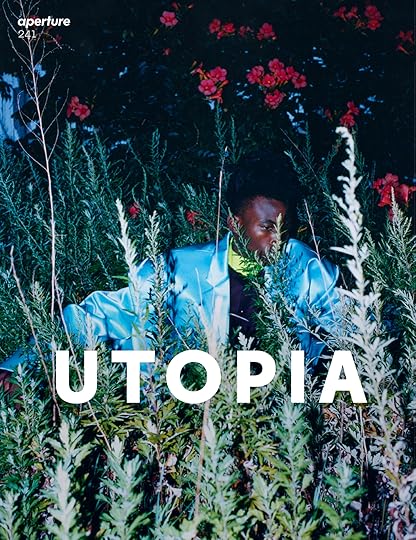
Aperture 241
Shop Now[image error]
How Photographers Responded to the Arab Spring
Learn More[image error]
Tyler Mitchell’s Love for a Common Way of Life
Learn More[image error]Rose: When you mention technology, it makes me think of the uneasy, even paradoxical, relationship between capitalism and utopia. One of the most surprising moments in the film is when you reveal that this massively ambitious ecological research station was funded by a Texas oil billionaire.
Wolf: They were doing a self-financed project that was trying to change the world for the better and make money at the same time. It’s 100 percent the model of Silicon Valley—of “disruption.” It’s the ethos of Elon Musk or Mark Zuckerberg, of breaking things to make them better. They were doing it before that model existed and was viable.
I can’t tell you whether that was why the project failed; I can only speak to my point of view as the filmmaker. I wanted the film to be a parable about the limitations of this model, of private venture environmentalism. As much as the film honors and celebrates the vision and aspirations of this group, it is a cautionary tale about how radical environmentalism and corporate interests aren’t the best bedfellows. And speaking of symbolism that’s too good to be true—Steve Bannon is the person who facilitated the corporate takeover of Biosphere 2.
Rose: What a twist in the story! When I saw the footage of Bannon giving a press conference outside of the Biosphere 2 building, it certainly did throw the project’s connections with the present into stark relief. And speaking of these contemporary resonances, I have to ask about the idea of colonization. The Synergists and the Biospherians you interview are totally open about the fact that it was originally envisioned as a step toward colonizing Mars. It’s clear that this seemed harmless to them—after all, they’re talking about an uninhabited planet—but we’re in a moment of fundamentally questioning colonial projects of all kinds. Do you think that there is something about the desire to start over by conquering new territory that is inherently flawed? Is the link between utopias and colonies unavoidable, and is that another dark side of the utopian project?
Wolf: I do think there is a postcolonial analysis of Biosphere 2 that needs to be carried out. The project was conceived of and executed by an entirely white crew. This group said that they were undertaking an ecological project or a scientific project, but in so many ways Biosphere 2 ended up replicating certain dynamics of society. It became a model of society in which there were no established politics about decision-making. So John Allen and Margaret Augustine, the Biosphere 2 CEO, sort of de facto became these totalitarian leaders. The whole question of power spiraled out of control.
Rose: There’s a very powerful moment in the film when you’re cutting between footage of tourists visiting the facility soon after the mission began, when the Biospherians were still inside. We see a group of African American students, one of whom looks into the camera and says, “I would like to know what a young Black woman from Brooklyn would do in a biosphere!” I imagine that by this point in the film most contemporary viewers have registered the lack of diversity in the project, but you made an editorial decision to explicitly call it out.
Wolf: In the past few months, as we’re looking really critically at systemic racism, I’ve recognized that ideas about sustainability are intrinsically connected to the need for equity. Racial justice and environmentalism aren’t always seen as intersecting. We can’t sustain a just society unless we restructure things to enhance equity. I think a lot of utopian projects didn’t do that. Even if they aim to live sustainably on Earth or to create sustainable models of design, these projects reify structural power dynamics that are ultimately oppressive.
 Biospherians Mark Nelson and Linda Leigh measuring trees, 1991
Biospherians Mark Nelson and Linda Leigh measuring trees, 1991All images from the documentary Spaceship Earth, 2020. Courtesy Matt Wolf
Rose: You could never have planned this, but your film is reaching audiences at a moment when we all feel a little bit like Biospherians. We’ve spent months isolated in these little microcosmic worlds of our homes, where some of us are experiencing the strains of undergoing that experience with small groups of other people, and some of us are experiencing the strains of going through that in isolation and only seeing other people in a mediated way on screens. Has this changed how you see the film? Has it changed your hopes for its impact?
Wolf: It changed the reality of how the film has reached its audience and how it was distributed in the world. In some ways, that’s disappointing to me. I really miss showing films for audiences, communicating with people in real life. In other ways, it was a kind of uncanny opportunity to reach people who were captive at home. As a documentary filmmaker, you’re obviously cognizant of the unexpected, and you always realize that a film you make that’s about the real world can take on an intense new meaning in the future. That’s part of the excitement.
It was quite unusual to make a film that I thought was already prescient because it dealt with issues of ecological catastrophe but then became hyperprescient in the sense that it spoke to the experience we are all going through in quarantine. I don’t necessarily think the film is directly instructive for people about the quarantine, but I do think we can learn from the experience of the Biospherians. The Biospherians, when they left Biosphere 2, all spoke about a feeling of personal transformation. One of them, Mark Nelson, said at the reentry ceremony, “To live in a small world … changes who you are.” They could no longer take anything for granted when they reentered the larger system of planet Earth.
Rose: And you were thinking about how quarantine might have similar lessons about our relationship to the world outside?
Wolf: When the film first came out, at the height of the quarantine, I hoped that the experience would shift people’s consciousness about the environment, would show how we could start thinking about creating lower levels of pollution, about eating food in more sustainable ways—maybe that the transformations we underwent during quarantine would affect how we continue living. But now, thinking about it, perhaps the real transformation is that people are no longer willing to accept the injustices that have existed around us for all of our lives. As a result of being isolated, injustice became intolerable, and this realization broke through the barrier of quarantine so that people went back out into the world to protest. What ended up happening, a month or two after the film came out, was the largest series of civil rights protests in American history. I do think, without a doubt, there’s a correlation between the quarantine and the protests. Because people seem to have gone through an experience of personal transformation in which the way they engage in the outside world had shifted.
Rose: The estrangement of quarantine created enough distance for people to start reevaluating social structures that they might have previously taken for granted.
Wolf: When the world is fucked up by a pandemic, and that actually intervenes in your day-to day life, your consciousness about the fucked-up-ness of the world is really thrown into focus. People are realizing: We don’t want to go back to normal because normal was unjust. So how do we define the new normal? And now, in a way, we’re talking about futurism. And how we’re choosing to reimagine this world is as a new normal that’s more just. That sense of equity is often the missing link in these utopian projects.
This article originally appeared in Aperture, issue 241, “Utopia,” Winter 2020, under the title “Spaceship Earth.” Read more from the issue, or subscribe to Aperture and never miss an issue.
The Counterculture Collective Who Wanted Save the Earth
For more than a decade, the filmmaker Matt Wolf has won acclaim for his meticulously crafted documentaries that reveal lost histories through deep dives into media archives. His focus is often on radical outsiders whose projects range from the quixotic to the paranoiac. His first film, Wild Combination: A Portrait of Arthur Russell (2008), is an exploration of the life and work of an avant-garde cellist and disco producer, while Recorder: The Marion Stokes Project (2019) examines the fascinating obsession of its subject, who recorded live television news continuously from 1979 until her death in 2012.
Wolf’s latest film, Spaceship Earth (2020), traces the activities of a counterculture collective known as the Synergists from the 1969 founding of a sustainable ranch in New Mexico through the 1991 launch of Biosphere 2, a staggeringly ambitious attempt to pave the way for human life on Mars and to learn about how to live more sustainably on Earth by building a completely self-enclosed ecosystem inside a glass pyramid in the Arizona desert. Last summer, Wolf spoke to the architect and critic Julian Rose about the uncanny resonance of the Synergists’ efforts to give form to the future.
 Biospherian candidates, 1990
Biospherian candidates, 1990Julian Rose: One of the fascinating things about Spaceship Earth is that the protagonists were obsessively documenting their own work as it progressed, producing countless hours of film and video that captured the projects they pursued. How did you first become aware of all that archival material, and how did your film evolve out of it?
Matt Wolf: My creative process involves searching for archives because I’m drawn toward hidden histories. Most of the preliminary research I do begins on the Internet. In this case, I came across these striking images of eight people in bright-red jumpsuits, looking like the band Devo, standing in front of a glowing glass pyramid, and I genuinely thought they were stills from a ’90s science-fiction film. But I quickly realized that, in fact, this structure was real—it was Biosphere 2—and that those people lived sealed inside of it for two years. And the more I looked into the history of the project, the more byzantine the story became. I learned that it had been the brainchild of this countercultural group called the Synergists, and I went to their commune-ranch in New Mexico called Synergia Ranch. When I arrived, I was brought into this temperature-controlled closet that had hundreds of 16mm films and analog videotapes and thousands of images. I learned that this group had been documenting their activity for nearly half a century, and that the material had never been used or seen.
Rose: The term archival usually suggests material that’s raw or unprocessed, but when I watched the film, I was struck by how highly authored, even artistic, much of the footage is—some of it looks like it could be experimental film or video art. Did that level of authorship complicate your own role as a filmmaker?
Wolf: My filmmaking involves working with personal archives—personal in the sense that they are outside established institutions or are even anti-institutional. I’m often looking at people who pursued complex and multifaceted projects, and they didn’t necessarily represent and explain those projects in ways that were accessible. I want to reappraise their legacies and act as a translator, helping to find the logic and coherence and vision behind this idiosyncratic activity, and to explore how it is often incredibly relevant to the broader world. For this film, the archival footage was literally shot from the perspective of my subjects, so I had a unique opportunity to visually translate their story beyond the flattened coverage in the news media.
 Performance still, Theater of All Possibilities of Synergia Ranch, featuring Biospherians Mark Nelson and Jane Poynter, ca. 1990
Performance still, Theater of All Possibilities of Synergia Ranch, featuring Biospherians Mark Nelson and Jane Poynter, ca. 1990Rose: There’s a fascinating tension that emerges between the footage shot by the subjects themselves and all the contemporary media coverage that you have woven into the film. At the time of the original experiment, Biosphere 2 was widely regarded as a spectacular failure, largely because of the way it was covered in the media. There were tremendous controversies about various technical problems and the ways they were solved—questions about secretly bringing materials into the structure and even pumping oxygen inside.
Do you think the project was seen as a failure because the vision it presented was too radical, too utopian, or simply because the Synergists couldn’t navigate the transition from their own personal documentation of the project to its depiction in the mass media?
Wolf: Well, there are two prongs to that question, one dealing with utopia and one dealing with the media’s impact on the project. The Synergists actually rejected the idea of utopia, primarily because it has historically been so associated with the imaginary and the impractical with failure. In his autobiography, John Allen, who coalesced the group, expresses how, in so many senses, the Synergists tried to create a place that doesn’t yet exist. So what I would say is that the underlying impulse behind this group was futurist rather than utopian.
Rose: But then that vision of the future couldn’t handle all the attention it attracted? The ethos of the project didn’t seem to survive translation into a kind of media spectacle.
Wolf: The title Spaceship Earth is a nod to the theatricality of the project as well as its ambitions. It’s obviously a reference to Buckminster Fuller’s seminal counterculture book, Operating Manual for Spaceship Earth (1969). Fuller was hugely influential for the Synergists. But it is also a nod to the Epcot amusement-park ride called Spaceship Earth, which is a kind of cartoonish sci-fi architecture with animatronic vignettes that depict progress and the future. Biosphere 2 was really this potent mix of countercultural sustainability and theme-park theatrics.
When you pursue a project as ambitious and big as Biosphere 2, it’s inevitable that it is going to attract attention. It became a real mainstream, pop-culture phenomenon. I don’t think this group was equipped with the public-relations skills to manage that. And the experimental dimension of the project, with the eight inhabitants, called the Biospherians, sealed inside of the structure for two years, also stoked the voyeuristic tendencies of the public that later found their expression in reality television shows such as Big Brother and The Real World, and ultimately, of course, Survivor. You can’t separate the way Biosphere 2 was treated in the media from those broader cultural trends. In fact, when The Real World was released, in 1992, the New York Times even called it something like “MTV’s answer to Biosphere 2.”
 Biosphere 2, 1991
Biosphere 2, 1991Rose: Visually, the physical structure of Biosphere 2 is absolutely stunning— this vast, futuristic complex of crystalline glass prisms rising up out of the empty desert. But was the architecture part of the problem precisely because it was so spectacular, so monumental, and so symbolic? You have some beautiful passages in your interviews with the Synergists where they talk about Fuller’s key architectural invention, the geodesic dome, as a perfect model for their group because the struts individually are very light and not very strong, but you put them together and they become incredibly powerful—the sum is greater than the parts. The symbolism is almost too good.
Wolf: That’s like the motto of this film: the symbolism is almost too good.
Rose: A great subtitle if it’s not too late! But you see where I’m going. Did the architecture place an impossible burden on the project?
Wolf: There is a kind of Emerald City aspect to the complex, but I don’t think it’s all theatrical, or that it’s responsible for the demise of the project. I find the architecture to be inspiring and bizarre and futuristic and speculative in terms of science fiction. To me, the aesthetics of it is what makes the project magnificent. That’s one of the words that Linda Leigh, one of the Biospherians, uses. Part of the Biospherians’ perspective is that they fell in love with the biosphere that they had created. There is an intoxicating appeal to the architecture as well as the ecological design inside, and if they fall in love with Biosphere 2, it’s instructive in the sense that we all have to fall in love with the biosphere. That’s what needs to happen for us to create a sustainable future.
Rose: I like the rejoinder that an aesthetic dimension is ultimately what makes it an inspiring project, which might suggest a way of rethinking the fate of utopia as a concept in architecture, where it has almost become a bad word. The thinking goes that modernism did not succeed in large part because it had utopian aspirations that were utterly misguided, and that because of those misguided aspirations, the movement has to be rejected wholesale. Modernism set out to transform the world for the better, and instead it left many things the same and made some things much worse. So when you hear someone describe modernism as utopian, that’s almost a coded reference to its failure. But, as your film shows, there is still so much that can be learned from a subtle, contradictory, and complex project—these projects are still worth studying, and we shouldn’t collapse our understanding of them into a binary of success or failure.
Wolf: The kernel of utopian aspiration is meaningful, and we shouldn’t shut down that aspiration because it is an engine of change. I think it’s quite cynical to dismiss the project of utopia wholesale even if it’s historically proven to fail in empirical terms. And again, I think that the architecture of Biosphere 2 did constitute an achievement in many ways. From a technical perspective, it was incredibly sophisticated—it was perhaps the most airtight structure ever built at that time. The architecture of Biosphere 2 is really the ultimate expression of ecotechnics—to use the Synergists’ term for the combination of ecology and technology— because to make it, engineers and ecologists and architects and experts from a wide variety of fields had to work together to create a system that could support life.
Related Items

Aperture 241
Shop Now[image error]
How Photographers Responded to the Arab Spring
Learn More[image error]
Tyler Mitchell’s Love for a Common Way of Life
Learn More[image error]Rose: When you mention technology, it makes me think of the uneasy, even paradoxical, relationship between capitalism and utopia. One of the most surprising moments in the film is when you reveal that this massively ambitious ecological research station was funded by a Texas oil billionaire.
Wolf: They were doing a self-financed project that was trying to change the world for the better and make money at the same time. It’s 100 percent the model of Silicon Valley—of “disruption.” It’s the ethos of Elon Musk or Mark Zuckerberg, of breaking things to make them better. They were doing it before that model existed and was viable.
I can’t tell you whether that was why the project failed; I can only speak to my point of view as the filmmaker. I wanted the film to be a parable about the limitations of this model, of private venture environmentalism. As much as the film honors and celebrates the vision and aspirations of this group, it is a cautionary tale about how radical environmentalism and corporate interests aren’t the best bedfellows. And speaking of symbolism that’s too good to be true—Steve Bannon is the person who facilitated the corporate takeover of Biosphere 2.
Rose: What a twist in the story! When I saw the footage of Bannon giving a press conference outside of the Biosphere 2 building, it certainly did throw the project’s connections with the present into stark relief. And speaking of these contemporary resonances, I have to ask about the idea of colonization. The Synergists and the Biospherians you interview are totally open about the fact that it was originally envisioned as a step toward colonizing Mars. It’s clear that this seemed harmless to them—after all, they’re talking about an uninhabited planet—but we’re in a moment of fundamentally questioning colonial projects of all kinds. Do you think that there is something about the desire to start over by conquering new territory that is inherently flawed? Is the link between utopias and colonies unavoidable, and is that another dark side of the utopian project?
Wolf: I do think there is a postcolonial analysis of Biosphere 2 that needs to be carried out. The project was conceived of and executed by an entirely white crew. This group said that they were undertaking an ecological project or a scientific project, but in so many ways Biosphere 2 ended up replicating certain dynamics of society. It became a model of society in which there were no established politics about decision-making. So John Allen and Margaret Augustine, the Biosphere 2 CEO, sort of de facto became these totalitarian leaders. The whole question of power spiraled out of control.
Rose: There’s a very powerful moment in the film when you’re cutting between footage of tourists visiting the facility soon after the mission began, when the Biospherians were still inside. We see a group of African American students, one of whom looks into the camera and says, “I would like to know what a young Black woman from Brooklyn would do in a biosphere!” I imagine that by this point in the film most contemporary viewers have registered the lack of diversity in the project, but you made an editorial decision to explicitly call it out.
Wolf: In the past few months, as we’re looking really critically at systemic racism, I’ve recognized that ideas about sustainability are intrinsically connected to the need for equity. Racial justice and environmentalism aren’t always seen as intersecting. We can’t sustain a just society unless we restructure things to enhance equity. I think a lot of utopian projects didn’t do that. Even if they aim to live sustainably on Earth or to create sustainable models of design, these projects reify structural power dynamics that are ultimately oppressive.
 Biospherians Mark Nelson and Linda Leigh measuring trees, 1991
Biospherians Mark Nelson and Linda Leigh measuring trees, 1991All images from the documentary Spaceship Earth, 2020. Courtesy Matt Wolf
Rose: You could never have planned this, but your film is reaching audiences at a moment when we all feel a little bit like Biospherians. We’ve spent months isolated in these little microcosmic worlds of our homes, where some of us are experiencing the strains of undergoing that experience with small groups of other people, and some of us are experiencing the strains of going through that in isolation and only seeing other people in a mediated way on screens. Has this changed how you see the film? Has it changed your hopes for its impact?
Wolf: It changed the reality of how the film has reached its audience and how it was distributed in the world. In some ways, that’s disappointing to me. I really miss showing films for audiences, communicating with people in real life. In other ways, it was a kind of uncanny opportunity to reach people who were captive at home. As a documentary filmmaker, you’re obviously cognizant of the unexpected, and you always realize that a film you make that’s about the real world can take on an intense new meaning in the future. That’s part of the excitement.
It was quite unusual to make a film that I thought was already prescient because it dealt with issues of ecological catastrophe but then became hyperprescient in the sense that it spoke to the experience we are all going through in quarantine. I don’t necessarily think the film is directly instructive for people about the quarantine, but I do think we can learn from the experience of the Biospherians. The Biospherians, when they left Biosphere 2, all spoke about a feeling of personal transformation. One of them, Mark Nelson, said at the reentry ceremony, “To live in a small world … changes who you are.” They could no longer take anything for granted when they reentered the larger system of planet Earth.
Rose: And you were thinking about how quarantine might have similar lessons about our relationship to the world outside?
Wolf: When the film first came out, at the height of the quarantine, I hoped that the experience would shift people’s consciousness about the environment, would show how we could start thinking about creating lower levels of pollution, about eating food in more sustainable ways—maybe that the transformations we underwent during quarantine would affect how we continue living. But now, thinking about it, perhaps the real transformation is that people are no longer willing to accept the injustices that have existed around us for all of our lives. As a result of being isolated, injustice became intolerable, and this realization broke through the barrier of quarantine so that people went back out into the world to protest. What ended up happening, a month or two after the film came out, was the largest series of civil rights protests in American history. I do think, without a doubt, there’s a correlation between the quarantine and the protests. Because people seem to have gone through an experience of personal transformation in which the way they engage in the outside world had shifted.
Rose: The estrangement of quarantine created enough distance for people to start reevaluating social structures that they might have previously taken for granted.
Wolf: When the world is fucked up by a pandemic, and that actually intervenes in your day-to day life, your consciousness about the fucked-up-ness of the world is really thrown into focus. People are realizing: We don’t want to go back to normal because normal was unjust. So how do we define the new normal? And now, in a way, we’re talking about futurism. And how we’re choosing to reimagine this world is as a new normal that’s more just. That sense of equity is often the missing link in these utopian projects.
This article originally appeared in Aperture, issue 241, “Utopia,” Winter 2020, under the title “Spaceship Earth.” Read more from the issue, or subscribe to Aperture and never miss an issue.
January 12, 2021
Finding Trance and Transcendence in Vasantha Yogananthan’s Photographic Epic
Vasantha Yogananthan trails the horizon of counterparts, the thin line of contact between allegory and anecdote, forethought and spontaneity, the end and the beginning. In his eight-year photography project A Myth of Two Souls, the French photographer of half Sri Lankan descent retraces the Ramayana through contemporary India and Sri Lanka, evoking each chapter of the ancient Indian epic through an exploration of the daily and the eternal of both local life and myth. Across a range of cities and ever-evolving techniques, including hand-painting and mixed media, Yogananthan’s first five books—Early Times (2016), The Promise (2017), Exile (2017), Dandaka (2018), and Howling Winds (2019)—transpose the journey of the exiled Prince Rama, which reaches its apex with the great war between Rama and the evil Ravana in Yogananthan’s newest installment, Afterlife (2020).
In chapter six, Yogananthan takes us to the modern-day Dussehra festival, an annual Hindu autumnal rite celebrating Rama’s victory over evil. Yogananthan’s images from night-long attempts to reach trance and transcendence are coupled with a text adaptation by the lyrically outspoken Indian author Meena Kandasamy, whose poem becomes the footpath on the seam of nighttime: “Walk with me as we walk past ourselves.”
I spoke with Yogananthan over Skype on the cusp of the new year about the episodic night vision of this unique chapter, where gravity is reversed, eyelids never fully meet, the body glides outside of its own lines, and darkness shines the way.
 Vasantha Yogananthan, The Dark Knight, Kulasekharapatnam, Tamil Nadu, India, 2019
Vasantha Yogananthan, The Dark Knight, Kulasekharapatnam, Tamil Nadu, India, 2019Yelena Moskovich: When did you first encounter the story of the Ramayana?
Vasantha Yogananthan: I read a comic-book version when I was a kid. My dad used to have them at home. But then, I completely forgot about it for many years, until I traveled to India in 2013. I was looking for a story that would allow me to explore India and Sri Lanka, as well as photography as a medium and the space between documentary and fiction. The Ramayana was just the perfect fit. Although it’s an Indian story and very specific to South Asia, the main events could have taken place in an epic from the West. There’s a prince and a princess, the princess is abducted, and there’s a big war. You don’t need to be particularly versed in Indian mythology to relate to the feelings in the story. It brings up questions about family and love, the concept of purity, relationships, things that could speak to anyone.
 Vasantha Yogananthan, CMYK, Kota, Rajasthan, India, 2018
Vasantha Yogananthan, CMYK, Kota, Rajasthan, India, 2018Moskovich: For this chapter, the darkest of the story, what drew you to choose the Dussehra festival as your visual landscape?
Yogananthan: This was the most challenging chapter, because I had to find a visual response to war. I knew from the start that I was not going to witness any real-life battles, so the festival was a really good way for me to enter the story. Before I experienced the festival, I had imagined it more like a carnival. But when I did the first trip to Rajasthan, then the subsequent trips to the south, I saw there was a very different vibe. Most people were staying up till daylight, sometimes getting really drunk, not eating or sleeping, men dressing as women, painting their faces in black or blue, trying to reach this state of trance. War can be photographed or documented, like in photojournalism, but there’s a visual response to war that can be, not at a physical level, but rather in the mind.
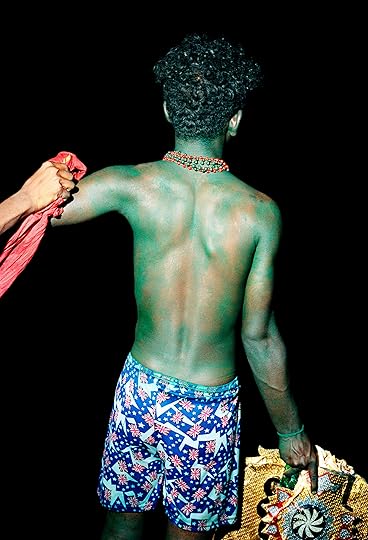 Vasantha Yogananthan, Green Soldier, Kulasekharapatnam, Tamil Nadu, India, 2019
Vasantha Yogananthan, Green Soldier, Kulasekharapatnam, Tamil Nadu, India, 2019Moskovich: This is so telling of our modern sense of war, actually. We aren’t necessarily going to be exposed to a battlefield, but we all know the terrain of psychological or internal struggle.
Yogananthan: Absolutely. And the thing is, no one goes to war alone. War is a collective experience. This is what was so striking for me in the festival, how all these people express this struggle with their bodies—without fighting each other. You have to imagine thousands and thousands of people. In the photos in the book, you don’t necessarily see that, because I made the choice of using the flash to have this black background where the figure stands out over the darkness.
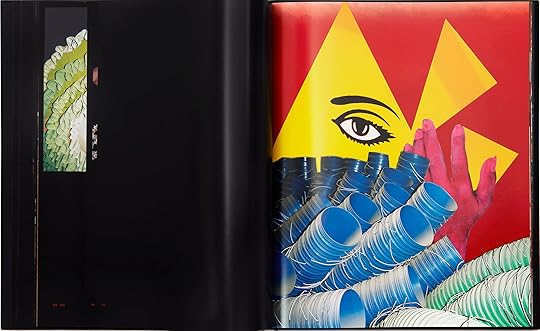 Spread from Vasantha Yogananthan, Afterlife (Chose Commune, 2020)
Spread from Vasantha Yogananthan, Afterlife (Chose Commune, 2020)Moskovich: Darkness is an experience in itself in Afterlife. The utter black backgrounds you describe, or even the sequence of images that are punctuated with these glossy pages of pure or near-pure blackout.
Yogananthan: Well, book number six of the Ramayana is known as the “Black Book.” Integrating the void that someone can’t help but feel when they face the darkness was very important. At some points, I wanted there to be almost nothing to look at but black. It’s really the relationship of the reader with this void that becomes the thing that’s happening.
Moskovich: There’s quite a shift in density and color palette in general in this book from your earlier work.
Yogananthan: Yes, my natural color palette is very soft, pastel colors. It’s true that this book is drastically different than the previous ones. This part of the story, the war, was calling for a more vivid palette, higher saturation, deep reds, deep blues, deep black. It was the first time I shot with a flash, which made for harsher photos with stark contrast.
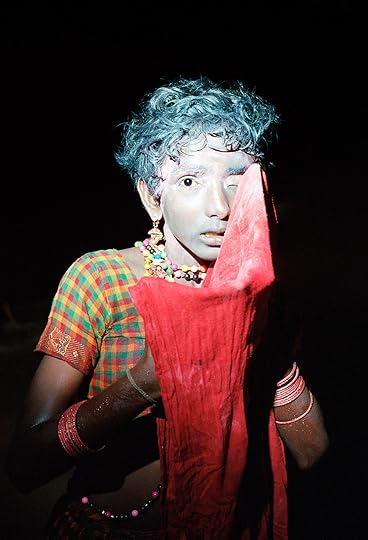 Vasantha Yogananthan, Tear Gas, Kulasekharapatnam, Tamil Nadu, India, 2019
Vasantha Yogananthan, Tear Gas, Kulasekharapatnam, Tamil Nadu, India, 2019Moskovich: The images you gather from the festival are uncanny, but not for the reasons one would expect. Dussehra is so full of “photogenic” rituals, so to speak—carrying clay statues of certain gods or goddesses to be dissolved in the water, or the burning of effigies of Ravana (the symbolic evil), yet you’ve sidestepped the depiction of fanfare to take us into the energy of the experience.
Yogananthan: These festivals have been so widely photographed. The idea, for me, was to use the space of the festival not to show what was happening, but what emotions were happening. What the people were feeling. For example, the last night of the festival, they burn the big Ravana statues in the middle of the night. Visually, it’s a very powerful sight. I took so many pictures of them burning Ravana, but in the end, I didn’t use a single photo of this moment in the book, because I didn’t want to fall into illustration.
Moskovich: The burning comes across in other ways. The one that stuck out for me was the couple of shots where a person is entering the sea, and the water is splashing in midair as if bursting into flames. The surprising alchemy of the sea on fire.
Yogananthan: It’s funny, because I didn’t notice that the water is always going upward. But yes, when the people are going into the sea, we see the water up in the air, we don’t know if it’s falling or rising—and the people themselves, we don’t know if they are falling or rising.
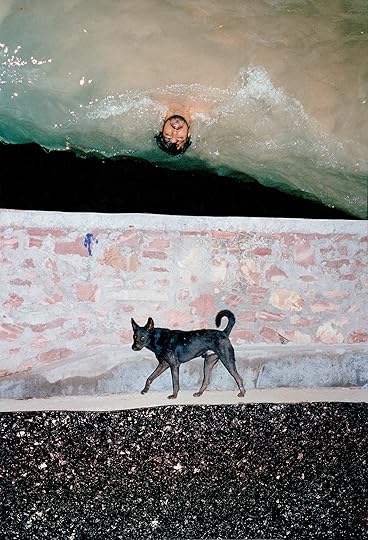 Vasantha Yogananthan, Ghost Dog, Kota, Rajasthan, India, 2018
Vasantha Yogananthan, Ghost Dog, Kota, Rajasthan, India, 2018Moskovich: Throughout the book as a whole, there’s an otherworldly gravity at play. Can you tell me a little more about the distinct movement of this chapter of your project?
Yogananthan: I shot most of the previous chapters with a large-format camera, in a slow process, where everything was carefully framed and constructed over many one- or two-month trips. For Afterlife, each festival was only a few nights, so I had a very tight time frame. I was often in the middle of a crowd of thousands, and there was no room or time to look into the viewfinder. Everything was in movement. I was holding the camera with the flash and shooting in complete blindness. We don’t often speak about the physicality of photography. As a photographer, your body, how you relate to the landscape and the people, how close you get to the people, especially in portraits, it’s a very physical experience. I was using a 50 mm lens, so if I wanted to get up close, like a crop shot, I had to almost get in the face of the person.
 Vasantha Yogananthan, Watching The Dead Go, Kota, Rajasthan, India, 2018
Vasantha Yogananthan, Watching The Dead Go, Kota, Rajasthan, India, 2018Moskovich: The eyes in these portraits are so fascinating. Many are half-open or just barely closed, almost stuck between two realms. Or else, the iris is stretched to the very corner of the eye, as if sliding into a different consciousness.
Yogananthan: I’m really glad that you noticed that. In a way, these are the kinds of photos a photographer would generally dismiss, because you either shoot someone with their eyes open or closed. Even the shots with the most direct eye contact are disorientating. One of the strongest ones for me in the book is where we don’t really know if it’s a man or a girl, but they’re washing their face and wiping it with a piece of fabric that covers one eye, and with the other, they look directly at us.
 Spread from Vasantha Yogananthan, Afterlife (Chose Commune, 2020)
Spread from Vasantha Yogananthan, Afterlife (Chose Commune, 2020)Moskovich: It almost implicates us into their experience of the trance. Looking in to look out, a way of pulling out of their bodies. You emphasize this pursuit of dislocation by introducing collage work into the project with this book. Was that method envisioned from the beginning?
Yogananthan: The collage part was a discovery for me. When I got back from the second trip, I laid out the prints, and I could see so many of them had something in the background that didn’t work. I decided to start cutting things out of the prints and gluing them together, then scanning the collage. This was quite a revelation. It allowed me to mix the physical space of the festival in various cities—the pictures I shot in Kota with the ones I shot in Tamil Nadu, for example—and create a third space. If you look closely, you can see the trace of the cutter. Also, the different sizes of the pages layered with each other, so that you can turn one smaller page and it reveals the full photo underneath it. There was a lot more work put into the editing and sequencing of this book than any of my other ones. I’ve come to realize that studio practice is as important as being in the field and research prior to travel.
Moskovich: What brought you to invest so heavily in studio work this time around?
Yogananthan: Afterlife was shot in ten, twelve days, but put together over many months. When I started developing the photos and putting them together for the book, the pandemic hit and France went into lockdown. All the assignments and projects for photographers were canceled. I was by myself, confined at home, going to the studio every day, just facing myself, my work, what I could do, what I could not do.
 Spread from Vasantha Yogananthan, Afterlife (Chose Commune, 2020)
Spread from Vasantha Yogananthan, Afterlife (Chose Commune, 2020)Moskovich: That really speaks to, not only our global situation, but the Ramayana as well, the journey of confronting oneself.
I’d like to talk about the text in this book, which is another sort of confrontation. You’ve collaborated with various contemporary authors for the text in these chapters. What made you think of Meena Kandasamy, an Indian poet, fiction writer, and activist who’s quite emotionally courageous on the topic of intimacy, to render this chapter’s adaptation?
Yogananthan: Meena’s strength as a feminist, a woman, and a storyteller really made sense for this chapter. She received the pdf of the book and had carte blanche. You know, with this sort of collaboration, some writers want me to explain the photos or my process. But Meena didn’t ask one single question. She just emotionally responded to the photos.
The original epic has a patriarchal perspective, the princess waiting to be saved. In Meena’s poem, she twists the epic in an unusual and disturbing way. It becomes a long walk into the night and into the darkness of the soul, where the princess, Sita, is the one leading the way, walking with Ravana, who abducted her.
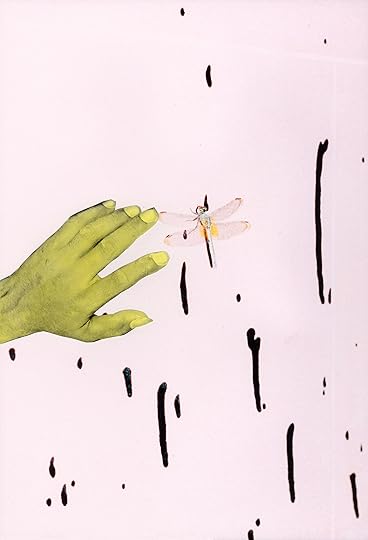 Vasantha Yogananthan, Dragonfly, Kota, Rajasthan, India, 2018
Vasantha Yogananthan, Dragonfly, Kota, Rajasthan, India, 2018Moskovich: Both the text and images complement each other’s sensuality.
Yogananthan: Yes, there is sensuality in the photos, these bodies, painted or half-naked, on the black background. But there was also a specific sensuality to the festivals.
In India, men are more comfortable with their bodies and with closeness. The festival would happen in these small villages where there weren’t enough accommodations for the thousands of people who came, so come nighttime, many would sleep outside, together in the street. And when it was cold, the men would sort of cuddle each other, so at like three or four in the morning, you’d be walking over all these bodies in the street hugging each other. It was very powerful to see.
Moskovich: It’s interesting that in this book, it’s a woman’s voice narrating images of mainly men’s bodies. We’re so used to seeing women’s bodies being narrated by a man’s voice.
Yogananthan: It’s like a woman in the darkness, on the battlefield, and she’s the one taking you through, from the first page to the last.
 Spread from Vasantha Yogananthan, Afterlife (Chose Commune, 2020)
Spread from Vasantha Yogananthan, Afterlife (Chose Commune, 2020)All photographs © the artist
Moskovich: The last line of Meena’s poem, “Walk with me until it is time to walk away,” is an eerie sort of promise. Till forever and only now. It’s so resonant with the treatment of time in this book, one night between mortality and the everlasting.
Yogananthan: I wanted to find a way to condense time, so that the book can feel like just one night, one single, very long walk from light to darkness, and perhaps back to light again—but it’s very open at the end. You don’t really know if you are finally getting out of the darkness and walking toward the light, or if the darkness will be there always. The end of the chapter is really terrifying. Though Rama rescues Sita, it isn’t just a typical happy ending. They are together again, but they will never be together again.
Moskovich: This long walk is also about walking with the contradictions.
Yogananthan: Yes, the whole walk is asking this big question: what, if anything, comes after?
Vasantha Yogananthan’s Afterlife was published by Chose Commune in September 2020.
January 8, 2021
How Photographers Responded to the Arab Spring
Hrair Sarkissian traced the flight path of a migratory bird and found it looked exactly like a noose. He constructed a small model of the building where he spent most of his life in Damascus, then, over seven hours, bashed it to bits with a sledgehammer, pausing after every strike to take a picture. Maha Maamoun used literary fiction, cinematic history, and a cache of YouTube videos documenting the nighttime break-ins at state security buildings in Cairo (and elsewhere in Egypt) to convey the weird inner fantasies let loose by periods of political unrest. She made works based on the stories of a man haunted by visions and a drug dealer who turned into an animal hybrid of zebra and goat. Samar Al Summary scoured Beirut for signs of survival and resistance at a time of imminent economic collapse. In that blighted city, heaving with protest, she captured not a single suffering body but the deep layers and delicate textures of material poverty, an ethos of improvisation hovering just above ruin.
A decade has passed since the start of the so-called Arab Spring, when a movement for radical change erupted in Tunisia and Egypt, rolled across North Africa and the Middle East, and spilled down into the Gulf. People were fed up with corrupt and autocratic rulers, unemployment, lack of opportunity and mobility, hunger, and the increasingly threadbare quality of their lives. From the beginning, young protesters and their ideological elders spoke of their movement in terms of revolution. The demonstrations were first sparked by ugly events: the Tunisian street vendor Mohamed Bouazizi burning himself to death in the interior town of Sidi Bouzid, and the Egyptian millennial Khaled Said dragged out of an internet café and beaten lifeless by police in the coastal city of Alexandria. The protests grew, in part, because images of young people demonstrating in public and jostling for change circulated widely on social media and in the press. Exuberant crowds on Tunis’s Avenue Habib Bourguiba and in Cairo’s Tahrir Square forced the regimes of Zine al Abidine Ben Ali and Hosni Mubarak to fall. No matter what happened after, much of the initial footage, like the electrifying physical experience of being in those crowds, was beautiful and exhilarating and brave.
 Hrair Sarkissian, Execution Squares, 2008
Hrair Sarkissian, Execution Squares, 2008Courtesy the artist
But the outcomes for almost every country where protests took place—from the end of 2010, throughout 2011 and after, and into the periodic resurgences occurring to this day in Algeria, Iraq, Lebanon, and Sudan—have been terrible. Syria descended into civil war. Yemen and Libya were left in total disarray (both countries are currently deemed failed states). Egypt is now more authoritarian than ever. The trajectory of the Arab Spring has been so dismal that many participants and observers disavow the notion that it was ever a movement at all, that the narrative of disparate events strung together into a single story had any coherence beyond useless generalities. That shift has put artists and image makers in a curious bind. On one hand, there was tremendous hunger for work addressing the events of the Arab Spring, particularly from the art market and from museums in the years after 2011. On the other, any serious attempt to make sense of what happened seems delusional and as doomed to fail as the revolutions themselves.
Perhaps for those ostensibly paradoxical reasons, some of the most thoughtful bodies of work to arise from this long and painful decade are also the subtlest. They come at the Arab Spring from odd angles. Works by Sarkissian, Maamoun, and Al Summary, and others by Omar Imam, Kamel Moussa, Fethi Sahraoui, and Katia Kameli, give shape and meaning to the fleeting possibility, to the crack in the way things were, to the sense of an opening that was present in the early protests. If there was anything utopian in the impulses of the Arab Spring, then it can be found in the notion of a “suspended space,” Al Summary’s description of what she looks for in the scenes she photographs. It applies to the art of a handful of artists who, like her, address difficult circumstances with integrity, nuance, and immovable specificity. In their work, they hold on to that suspended space for future reference, maybe even for eventual use. In doing so, they use new forms and imaging technologies to address a sadly familiar story without resorting to cliché.
 Omar Imam, Untitled 12, 2009
Omar Imam, Untitled 12, 2009Courtesy the artist and Catherine Edelman Gallery
Sarkissian left Damascus for Europe in 2008, the same year he made an unforgettable body of work called Execution Squares, a series of fourteen lush, eerie images of the sites of public hangings in Aleppo, Damascus, and Latakia. Each picture shows an urban area packed with history but completely emptied of people, taken in the exquisite pale-orange light of early morning. Sarkissian hasn’t returned to Syria since 2011. In 2014, I asked him if he ever thought about addressing the conflict in his work. Emphatically, he told me, “No.” And, moreover, he wouldn’t allow Execution Squares to be shown in a context where it would be misunderstood—where it would be mistaken for an illustration of events in Syria after the start of the uprising there. Earlier this year, I asked Sarkissian the same question. Again, he said, “No.” He hesitated before continuing, “At least not directly. When it comes to doing something about Syria, I really don’t want to make a work about people who are suffering. Because then it will be hung on a wall and people will say it’s beautiful, or they will say it’s horrible.” He paused, then added, “But I do tell the story of Syria through the story of a bird.”
 Hrair Sarkissian Final Flight, 2018–19. Photograph by Oak Taylor Smith
Hrair Sarkissian Final Flight, 2018–19. Photograph by Oak Taylor SmithCourtesy the artist
Final Flight (2018–19) is unusual in Sarkissian’s oeuvre in that it doesn’t feature any of his own photography. Instead, it consists of a nine-hour video he recorded from Google Earth; a print of a photograph borrowed from an Italian diplomat; a map in relief on aluminum; and nine hand-painted sculptures, all cast in resin and bone from the 3-D scan of a skull from the northern bald ibis in a Spanish zoo. The story of the northern bald ibis, one of the rarest bird species in the Middle East, is epic and multifaceted. For Sarkissian, “It’s exactly what the Syrians have gone through,” without being obvious or in your face. The story of a bird that has been endangered, rediscovered, and disappeared makes for a profound metaphor for migration and freedom of movement.
At a time when hundreds of her colleagues have left Egypt for a better life in Europe or North America, Maamoun still lives in the same Cairo neighborhood where she grew up. A cofounder of the Contemporary Image Collective and of the upstart publishing house Kayfa ta, meaning “how-to” in Arabic, Maamoun has developed a singular style combining popular materials and high literary forms. Like Sarkissian’s Execution Squares, one of her best-known works, the nine-minute video 2026 (2010), is often cast, and probably misunderstood, as a work of prophecy. It reenacts an iconic scene from Chris Marker’s landmark film La Jetée (1962), pairing it with an excerpt from an Egyptian sci-fi novel, Mahmoud Osman’s Revolution of 2053: The Beginning (2007), in which a time traveler describes a nightmarish tableau at the pyramids in the aftermath of a revolution far into the future.
 Maha Maamoun, Still from 2026, 2010. Single-channel video, 9 minutes
Maha Maamoun, Still from 2026, 2010. Single-channel video, 9 minutesCourtesy the artist
 Maha Maamoun, Still from Dear Animal, 2016. Single-channel video, 25 minutes, 30 seconds
Maha Maamoun, Still from Dear Animal, 2016. Single-channel video, 25 minutes, 30 secondsCourtesy the artist
For the eight-and-a-half-minute video Night Visitor: The Night of Counting the Years (2011), Maamoun pieced together a riveting sequence excerpted from YouTube clips uploaded by Tahrir Square protesters. Soon after the start of the revolution, they broke into various state security buildings, which had been totally inaccessible during the Mubarak regime. Maamoun deleted all of the accompanying commentary and focused on signs of wealth and leisure that protesters found stashed in the forbidding structures of the state. Even where the footage pauses on the letters of political prisoners, Maamoun emphasizes poetic language over any explosive revelations of fact. Her twenty-five-minute video Dear Animal (2016) interweaves a short story by the writer Haytham el-Wardany, about a drug dealer who turns into a goat with zebra stripes, with the seemingly guileless dispatches of Azza Shaaban, an activist who left Egypt to find spiritual healing in India. Longer and more capacious than her previous works, Dear Animal is Maamoun’s clearest expression to date of a suspended space, which she creates from the disjunction between wildly different source materials.
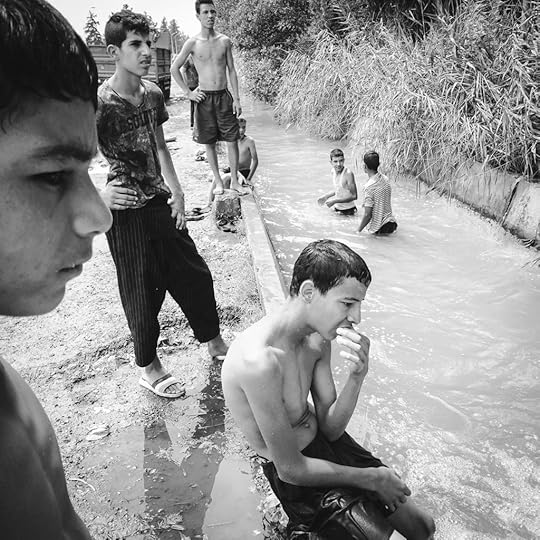 Fethi Sahraoui, Youngsters in a large irrigation channel, Relizane, Algeria, 2016, from the series Escaping the Heatwave
Fethi Sahraoui, Youngsters in a large irrigation channel, Relizane, Algeria, 2016, from the series Escaping the HeatwaveCourtesy the artist and Collective 220
What’s striking about these evocative works emanating from the Arab world in the decade since the Arab Spring is how little they show the protests themselves. One of Omar Imam’s surreal images, from an untitled series that spans the years before and after the uprising in Syria, shows a young couple seated in two suitcases. They seem to have dropped from the sky into a graveled landscape, the devastating conditions in Syria envisioned only through the extreme tensions they have created among people in love, who are perhaps planning a future and therefore struggling with the decision to stay, separate, or abandon their country. Since 2014, Fethi Sahraoui has been documenting a group of teenage boys in northwestern Algeria, whom he links to the generation now orchestrating the country’s popular uprising in the streets. But Sahraoui’s pictures, in the series Stadiumphilia and Escaping the Heatwave (both 2014–18), never go there. They linger instead in the sports stadiums where his subjects have developed their political consciousness, through the songs and banners of football matches, which are some of the only events where young men in Algeria can gather for entertainment in large numbers. Or they escape to the various locales, including water towers and irrigation channels in addition to the sea, where the boys seek relief from the extreme summer heat.
One of the reasons Samar Al Summary moved to Beirut was to learn a certain method of care and sensitivity from the artists and thinkers of the well-established art scene there (specifically the practitioners associated with Ashkal Alwan’s Home Workspace Program, where Al Summary was a fellow), who had for generations worked through the problems and dangers of photographing in public and on the street. Born and raised in Jeddah, Al Summary grew up poor in Saudi Arabia, a country both renowned and reviled for its riches. She also came of age with the understanding that “being an artist was basically on the edge of criminality.” When she moved to the United States as a teenager, Al Summary was visually overwhelmed. She started taking pictures “as a way to live and be at peace” with the overabundance of detail in the world around her. By the time she left the American Southwest (she studied in Arizona and New Mexico) and returned to the Arab world, she had started to develop her own visual language.
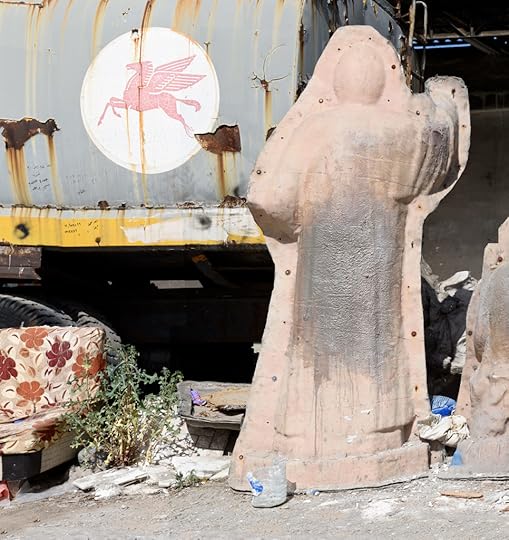 Samar Al Summary, Pegasus Corporate Logo, Casting Shell of Saint, and a Floral Love Seat, Lebanon, 2020
Samar Al Summary, Pegasus Corporate Logo, Casting Shell of Saint, and a Floral Love Seat, Lebanon, 2020Courtesy the artist
The protests that broke out in Lebanon in 2019, and the horrific explosion in Beirut in August, transformed many things. However, none of the pictures in Al Summary’s ruminative series Trust Beauty Bank and Secure the Door (both 2019–20) focus on the actuality of those events. Instead, Al Summary turns to textures, remnants, and pileups of competing imagery, from advertisements and forgotten campaign posters to cobbled-together homes and businesses stripped of signage. One of the things she looks for is vibrant color, which doesn’t last in the hot, humid climate of the Levantine coast. “Color in a hot climate is a sign of being contemporary,” Al Summary told me. “A place may look like a ruin, but if the color is bright, then it’s still lived in. We have so many images of death— I’m looking for a certain vivacity, a sense of balance and assembled beauty that goes beyond description.” She continued, “In the visual arts, we’re forced to contemplate without drawing conclusions, to be in a suspended space. For artists in the Middle East, when art is dealing with these hot-button issues, when formulas come to mind, it’s difficult to find the poetry of that moment while also being realistic.” The fact that she does so in her photographs may be one of the more important lessons of the last ten years—that even when political actions falter and movements for change fall short, works of art can hold on to the spaces they opened up for memory and for debate, even if the future remains uncertain.
This article originally appeared in Aperture, issue 241, “Utopia,” Winter 2020, under the title “Remains of the Day.” Read more from the issue, or subscribe to Aperture and never miss an issue.
December 28, 2020
Aperture’s Best Photography Features of 2020
This year, we revisited Nan Goldin’s The Ballad of Sexual Dependency, considered how Native artists challenge the story of America today, and asked what it means to be a photographer in the age of COVID-19. Here are some of this year’s highlights in photography and ideas.

The Many Faces of Home in Japanese Photography
Messy, minimal, or melancholic? From Aperture magazine’s “House & Home” issue, these images show the myriad forms of longing for home.
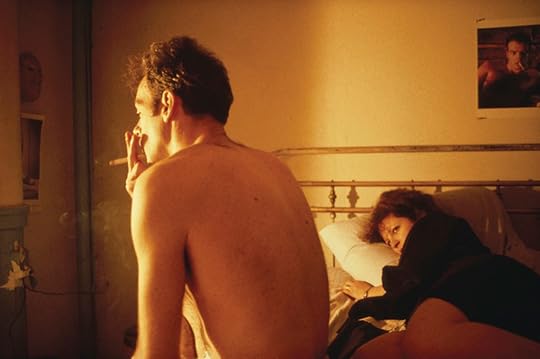
The Inside Story of How Nan Goldin Edited “The Ballad of Sexual Dependency”
From Aperture magazine’s “Ballads” issue, Elle Pérez speaks with Marvin Heiferman about the making of an iconic photobook.

11 Photographers on How to Finish a Body of Work
When should you bring a photographic project to an end? LaToya Ruby Frazier, Justine Kurland, Alec Soth, and more reflect on how to know when a series of work is complete.

Dorothea Lange and the Afterlife of Photographs
An exhibition reveals how Lange’s concern for the dispossessed has never been more relevant.

A Portrait of an Iranian Surfer Reveals Western Fantasies of the Middle East
The Italian photographer Giulia Frigieri wanted to profile a young Iranian surfer. But there was more to the story than her images revealed.

What “Greater New York” Got Right about Photography in the Age of Instagram
In 2010, photography was at a turning point. How did an ambitious survey at MoMA PS1 anticipate a generation of artists who define the field today?

How to Be a Photographer Right Now
Three artists confront how COVID-19 has changed their lives and work—and how they see the world.
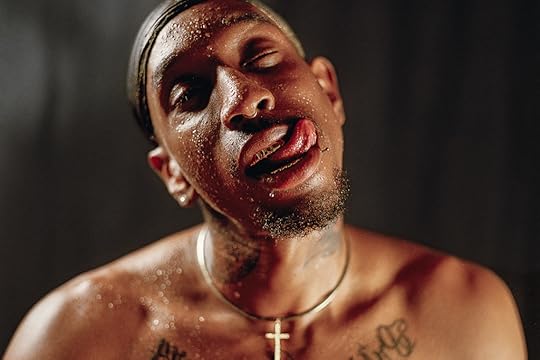
The Queer Black Artists Building Worlds of Desire
From Aperture magazine’s “Utopia” issue, in these photographs, queer acts and communal yearning flourish beyond the confines of mainstream gay culture.

Deborah Willis Thinks the Photobook Can Be Transformative
In Issue #018 of The PhotoBook Review, the renowned scholar speaks about her early career in photography, confronting racism in publishing, and why books about Black life are vital.

What Can Artists and Communities Learn from Historic Collections of Native Photography?
From Aperture magazine’s “Native America” issue, Wendy Red Star and Emily Moazami on images, ancestors, and the archives of the National Museum of the American Indian.

Yurie Nagashima’s Self-Portraits Interrogate the Male Gaze
In her latest photobook, the Japanese photographer discusses self-portraiture as a radical feminist gesture.
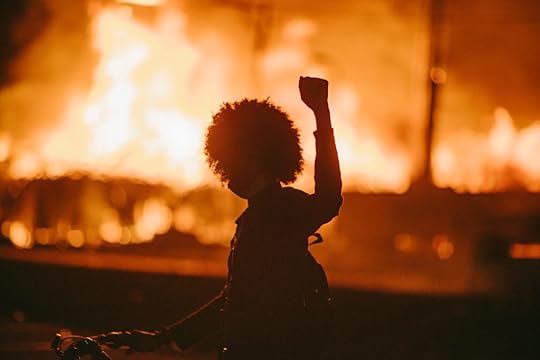
Why Photo Editors Need to Hire Black Photographers Every Day
How can we commit to making photography more Black, far into the future?
Subscribe to Aperture magazine and never miss an issue.
December 22, 2020
The Queens Photographer Building a Legacy for His Friends
In one of Dean Majd’s photographs, a young man slowly spits into an empty film cannister. The photograph is drenched in ruby red. The shot is close, close enough to make you squirm at the sight of the gob unspooling. The spit makes the photo harsh, but the red makes it soft, bleeding the subject into the surrounding environment in a hazy wash of neon light. It’s an image that is crude, an image that is beautiful. Majd’s ongoing series Hard Feelings doggedly walks this line between two sensations.
Majd started Hard Feelings in 2016. The arena is the skateboarding and graffiti scene in Queens, and the photographs are mostly of men. Men sprawled on cluttered beds or clutching a bloodied hand; men who have hurt themselves; men softening into a pool of water or a pool of light. “There’s something about the men that I photograph—there’s both a sensitivity and a hardness,” Majd tells me during a call over FaceTime. “As men, we’re not supposed to express our feelings, we’re not supposed to act a certain way.” But he and his friends are the opposite, they “do all that.” Majd’s friends cry with their faces in full view of the camera.
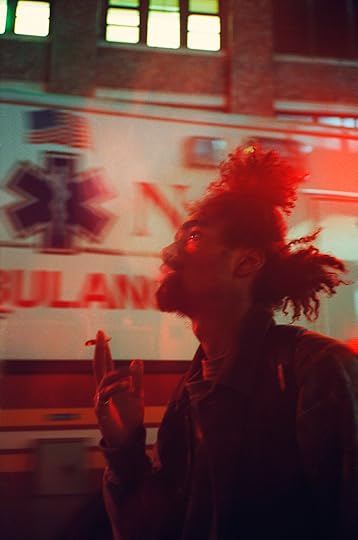 Dean Majd, karim (reborn), 2018
Dean Majd, karim (reborn), 2018He met many of these men several years ago, after he had become disconnected from the skateboarding scene, focusing on his studies in international relations and creative writing at City College of New York, in Upper Manhattan. He’d reunited with an old friend, James, at his local skatepark in Astoria. A week later, James suddenly passed away. Majd was the last person to photograph him. In the wake of this loss, Majd met James’s friends, a tightknit community of skaters and artists. “It just happened naturally that we all became super close,” he says. “And they were willing to be photographed.”
Traces of loss flit through Hard Feelings. James, he says, is always “hovering over the images.” In the ruby-drenched portrait spit (2017), the subject is shirtless. On his lower abdomen is a just-visible tattoo of the letters “DE” in bubbled graffiti styling. The full word is “DECE,” in homage to James’s nickname and graffiti tag, the art he used to mark his place.
Majd used his father’s hand-me-down Olympus point-and-shoot as a kid, photographing parties and concerts. But he didn’t think of becoming a professional photographer. His parents are immigrants from Palestine, and Majd’s imagined career choices were shaped by the classic first-gen decree: doctor, lawyer, or engineer. Still, his passion for photography persisted, and at around age eighteen, he came across Nan Goldin’s The Ballad of Sexual Dependency (Aperture, 1986). “That was the book for me,” he said. “That opened everything.” Majd fell in love with Goldin’s breathtakingly unguarded shots of her New York community. Spending time with Goldin’s work has sharpened his own artistic purpose: “to build a legacy for my friends, for Queens.”
 Dean Majd, bohemian rhapsody, 2017
Dean Majd, bohemian rhapsody, 2017Since then, Majd has stayed steady with his photographic origins: his camera, almost always, is a point-and-shoot. Compact, fast, discrete. “If someone is off guard,” he says, “in order to keep it as authentic as possible, I need to be quick with it.” Unmediated moments are critical, and Majd catches his friends in visceral, vulnerable flashes. In bobby and caleb (bear hug) (2018), one young man clutches another, his expression riveted by private sadness. A glaze of green tones covers the photograph, underscoring the unease that likely prompted the embrace. rissa (2018) is an arresting departure, in which Majd turns his lens on one of the women in his friend group; her black eye is painful to witness, but the camera’s gaze is one of care, and her own is both candid and trusting. self-mutilation (2018), a photograph of a friend’s arm lined with self-inflicted cuts, is bathed in warm hues. Majd’s documentation is uncensored and frank, but never cold or stark.
As with those early rolls, Majd seldom appears in the frame, but self-portraiture is a difficult muscle he is committed to working. “There are instances where I’ve been with people in the darkest times of their lives,” he tells me. “It would be disingenuous to not do the same. If someone is offering themselves, in every aspect, to be photographed, I can only counter that by saying, I’m doing the same with myself.”
In one such self-portrait, the ruby-red lighting returns. Majd photographs his face from below, framed against graffiti-covered interior walls—perhaps he’s at a concert. Blurred, out-of-focus, his silhouette appears ghostly, intentionally indistinct from the constellation of graffiti tags that, one can imagine, different members of Majd’s community have inscribed over different seasons.
“This work began with a death,” Majd says. At the end of October, another loss: one of Majd’s close friends died unexpectedly. “He was someone that I photographed all the time.” Majd photographed him less than a week before his passing, just like he had James. Now, when Majd looks through Hard Feelings, he greets griefs past and present. “It’s hard to even call the people in my images ‘subjects,’ because this goes beyond a photographic relationship,” Majd says. “The people in my images are my family, my blood. I don’t know what my life would be without them. I love them deeply, and through that love, these images are made.” Born of hurt, laden with tenderness, Hard Feelings is a remembrance, a gathering place, a legacy for those he loves.
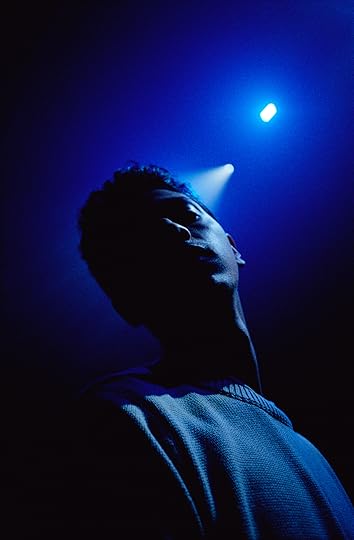 Dean Majd, freddy (hyper dark), 2019
Dean Majd, freddy (hyper dark), 2019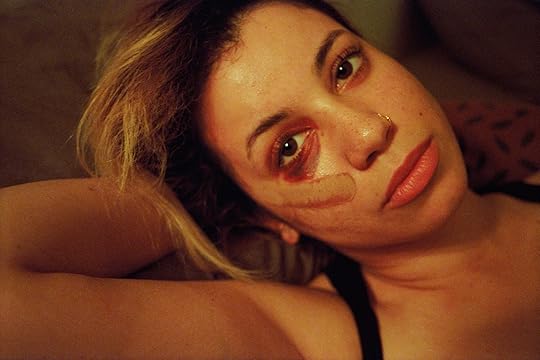 Dean Majd, rissa, 2018
Dean Majd, rissa, 2018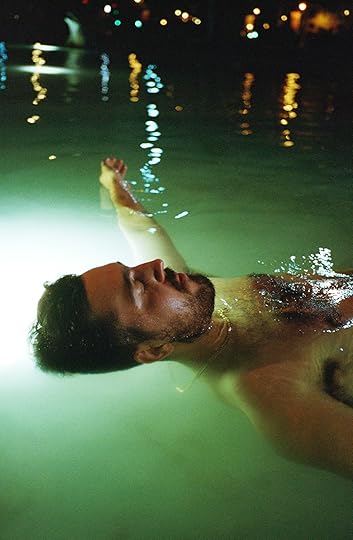 Dean Majd, dylan (baptism), 2019
Dean Majd, dylan (baptism), 2019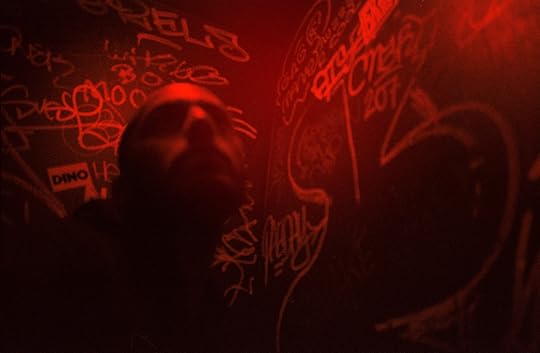 Dean Majd, self-portrait (hard feelings), 2017
Dean Majd, self-portrait (hard feelings), 2017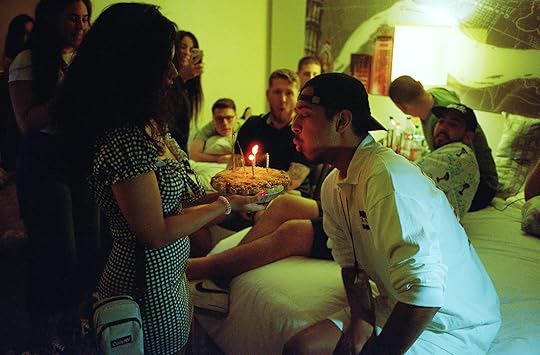 Dean Majd, blowout (zeke’s birthday), 2019
Dean Majd, blowout (zeke’s birthday), 2019 Dean Majd, spit, 2017
Dean Majd, spit, 2017 Dean Majd, self-mutilation, 2018
Dean Majd, self-mutilation, 2018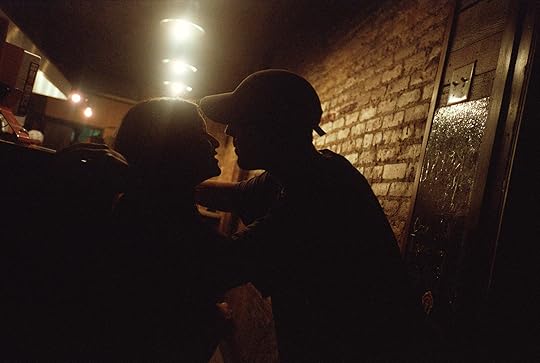 Dean Majd, dylan and eli (silhouette kiss), 2017
Dean Majd, dylan and eli (silhouette kiss), 2017 Dean Majd, self-portrait (acid tongue), 2019
Dean Majd, self-portrait (acid tongue), 2019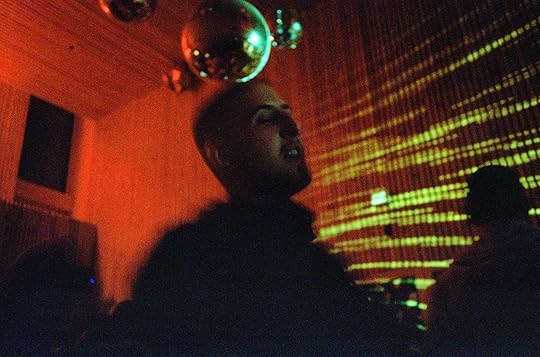 Dean Majd, jacob (red ecstasy), 2019
Dean Majd, jacob (red ecstasy), 2019All photographs courtesy the artist
Read more from our series “Introducing,” which highlights exciting new voices in photography.
An Exhibition in Tucson Looks at the Things We Leave Behind
Where one artist collects, another deliberately erases and alters. On Halloween in downtown Tucson, Arizona, Etherton Gallery’s opening of El Sueño, an exhibition of Tom Kiefer’s photographs of migrants’ seized belongings and Alejandro Cartagena’s reconfigured found prints, was extended for seven hours—ten people at a time, maximum, a COVID-era measure that prompted small waves of drifting viewers. The exhibition takes its title from a larger presentation of Kiefer’s work earlier this year at the Skirball Cultural Center in Los Angeles (El Sueño Americano/The American Dream); it is given new context here, in the company of Cartagena’s work and a small selection of Mexican folk retablos, vernacular paintings on tin representing the trials of Catholic saints. Perhaps particularly for a visitor to the city—I was working just outside Tucson for several weeks, close to the Sonoran Desert, hyperaware of my own temporary existence there—the exhibition felt attuned to the paths we travel, the things we carry, the impressions we leave behind.
Cartagena’s slashed, cutout, altered, and recollaged found photographs suggest the images we discard, and those that remain. In other series of works, Cartagena—born in the Dominican Republic and based in Monterrey, Mexico—has often focused on hidden and unseen lives and the wide disparity between reality and myth. In Carpoolers (2011–12), he photographed workers riding in the backs of trucks to and from work. In A Small Guide to Homeownership (2005–20; featured in the “House and Home” issue of Aperture magazine and recently published as a photobook by The Velvet Cell), he placed images from previous series, including Carpoolers and Suburbia Mexicana: Fragmented Cities (2005–10), with found texts from guidebooks for potential homeowners, highlighting the profound gap between blithe propaganda and reality.
 Alejandro Cartagena, Dismembered #30, 2019
Alejandro Cartagena, Dismembered #30, 2019In Cartagena’s Dismembered and Faces series, from his larger project Photographic Structures (2017–19), rather than compounding images, he removes and alters them. He mines landfills and flea markets in Mexico City for snapshots and family photographs, which he then transforms with a sharp blade, slicing and discarding crucial elements of the picture. Faces become empty voids; entire bodies disappear from group photos. Elsewhere, white oval-shaped space hovers above groups of well-dressed people, impressions of souls. Sometimes, he manipulates the cut fragments, juxtaposing an outline of a face against a larger silhouette, like an eclipse.
We are in a world now where many of us have become somewhat accustomed to seeing only aspects of each other, whether on Zoom calls, or out in the world, faces partially obscured by masks. Cartagena’s reconfigurations remove what we think of as the most definitive physical identifiers (eyes, nose, and mouth, for instance); his rearranged leftovers resemble a dissection model of all the empty pieces that exist within us. In one reconstruction, a jaggedly cut-out head leaves a comet-like trail. Cartagena’s restructured photographs call into question their original constructs: how much a picture can tell us, and how lasting are the impressions we leave. As with all found photographs, part of the fascination is the mystery of why they ended up in a stranger’s hands. Why do we hold onto images? Why do we let them go? Seeing them torn apart and remade again, defaced and reincarnated, endows them with a mystic quality. Cartagena renders their absence visible.
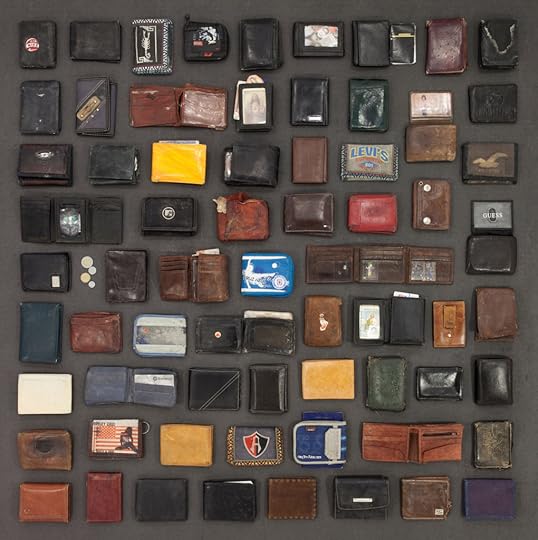 Tom Kiefer, Billfolds and Wallets, 2014
Tom Kiefer, Billfolds and Wallets, 2014Tom Kiefer’s El Sueño Americano (2007–ongoing), centered on evidence rather than absence, occupies the larger gallery, bringing Kiefer’s project, which began in Southern Arizona, closer to its origins. Born in Wichita, Kansas, and raised mostly in Seattle, Kiefer worked as a graphic designer and, later, as an antiques dealer in Los Angeles. In December 2001, he moved to Ajo, Arizona, for a cheaper cost of living that he hoped would allow him to focus on his photographic work.
Ajo is a former copper-mining town, forty miles from the state’s border with Mexico—one of the most dangerous and deadly stretches for migrants coming north, a crossing through the Sonoran Desert that typically takes seven days on foot. Most of these journeys are necessarily invisible, but their stories play out vividly and painfully in Kiefer’s pictures. El Sueño translates to “the dream”—materialized in these taxonomic photographs of the objects carried by migrants and asylum-seekers from Mexico and Central America. Bibles and pocket knives. Water bottles and Snickers bars. Condoms and shoelaces. Floral handkerchiefs, backpacks, cans of tuna fish. Toothbrushes, gloves. A Mickey Mouse hoodie. Photographs, ostensibly of loved ones left behind.
 Tom Kiefer, Water Bottles, 2015
Tom Kiefer, Water Bottles, 2015In 2003, Kiefer took a part-time job as a janitor at a U.S. Customs and Border Protection processing facility. He had no contact with the people who were taken there, he told me, but when he was given permission to transport the food items and donate them to a local food bank, he was astounded at all the other seized objects he discovered. Plastic hair combs. Wallets. Cell phones. A Hello Kitty backpack. An E.T. doll. A love letter—“Bianca quiero que sepas que te amado desde que tu, Conoci.” (“Bianca, I want you to know that I have loved you since I met you.”) All the things that agents had deemed either nonessential or “potentially lethal” were taken away from migrants and asylum-seekers about to be detained. Kiefer was haunted by them all.
With no way of finding the owners, he began collecting these items. Rosaries. Medication for depression. CDs. Baby shoes. Makeup compacts. For several years, he ferried them to a warehouse, cataloguing them, boxes and boxes, looking and thinking. “I knew I wanted to photograph them,” Kiefer told me, “but for a long time, I wasn’t sure how. A friend’s suggestion to depict them in the Sonoran landscape felt too heavy-handed.” Kiefer, whose artistic heroes include Walker Evans, was inclined to a straightforward approach. Instinctively, he began placing arrangements of similar objects against different colored backgrounds. Photographed collectively or singly, the compositions are graphically appealing. Then you draw close. The hopefulness of so many makeup compacts. The handwritten inscriptions in those Bibles. The Mötley Crüe card tucked in a wallet. The dirt and sweat stains on a T-shirt lettered “Blood Donor U.S.A.”
 Tom Kiefer, Blood Donor, 2015
Tom Kiefer, Blood Donor, 2015All works courtesy the artists and Etherton Gallery, Tucson
Kiefer’s photographs of seized shoelaces and gloves disturbingly reminded me of exhibitions of shoes and gloves taken from Holocaust victims at Auschwitz. Kiefer was right to photograph these items simply. Within them is the mingled terror and desperation and hope embedded in the journeys of their unknown owners. (Eventually, he hopes an institution will collect these historical documents.) In 2014, Kiefer quit his job to begin photographing the items full-time, a process many years in the making. “I see them as sacred,” he said.
Leaving the exhibition, I again passed the wall of Mexican folk retablos near the entrance. In the nineteenth century, works like these were common in central Mexico. Here, they are shown in low light, as innocuous as they must have been in their original homes, talismans and guardians of the way in—and of the way out.
El Sueño: Tom Kiefer, Alejandro Cartagena, and a Selection of Mexican Folk Retablos is on view at Etherton Gallery, Tucson, Arizona, through February 6, 2021.
December 10, 2020
Dawoud Bey on the Photography World, Past and Present
Dawoud Bey is one of the most influential photographers of his generation. The subject of a major retrospective at the Whitney Museum of American Art, scheduled for April 2021, and a new monograph to be published by MACK, Bey began his career in New York in the 1970s, making evocative portraits in Harlem and Brooklyn. In the context of the Aperture Forward winter campaign, Bey spoke with Chris Boot, who is approaching the end of a ten-year term as executive director of Aperture Foundation, about the changes in the world of photography over the decade since the rise of Instagram and the iPhone.
 Dawoud Bey, A Couple at a Main Street Bus Stop, Rochester, New York, 1989
Dawoud Bey, A Couple at a Main Street Bus Stop, Rochester, New York, 1989Chris Boot: Dawoud, I’m writing you on November 8, thirty hours or so after Joe Biden and Kamala Harris declared victory in the U.S. elections. It’s been an amazing couple of days; there has been such an explosion of joy and relief during these sublime, warm fall days here on the East Coast. I will never forget how yesterday and today felt. This is very British of me to ask, but how is the weather in Chicago? Is it all joy there too?
Dawoud Bey: Having this conversation at this moment feels like when the reset button has been hit, and just in the nick of time! With the pandemic now going into its ninth month unabated, and with no structure in place to mitigate it, it was feeling like an endless march over a cliff. Fortunately, that reign of gratuitous horror has come to an end, though there will be much work ahead—and the lingering fact that almost half the country voted to continue down that path to contend with.
It has been relatively balmy here in Chicago for this time of the year, with temperatures in the high sixties to mid-seventies, and the sun seemed to be shining just a little brighter after the election results came in. Folks were dancing in the streets in every neighborhood except one in Chicago, with forty-nine of fifty wards going for Biden. And of course, having Kamala Harris as the first Black vice president–elect brings an extraordinary air of expectation and possibility back to the country. So, things are good here for the moment, and we should all enjoy it, before getting back to the work of making the democratic project work for everyone.
 Dawoud Bey, Odalys, Chadsey High School, Detroit, 2003
Dawoud Bey, Odalys, Chadsey High School, Detroit, 2003Boot: Photography has always been dynamic, continuing to reinvent itself, artistically and in terms of its social role. Given the events of this year, do you think that 2020 might turn out to be a particular moment of transformation in our field and its story?
Bey: When I think about how to answer that, I think about the two primary ways in which I engage with photography, through my own practice as an artist and through teaching, both of which I’ve been engaged in for over four decades. My own practice is rooted in the moment that I came to photography, which goes back to the 1970s, when I started going out to look at photographs in an art context for the first time. And at that time, that meant going to see the work of Irving Penn and Richard Avedon at Marlborough Gallery, and encountering the photographs of Mike Disfarmer in a small exhibition at MoMA. I happened upon a Harry Callahan exhibition at the Met around the same time. I had previously encountered Roy DeCarava’s photographs in a copy of The Sweet Flypaper of Life (1955), but hadn’t yet seen those pictures on a wall, so their full impact hadn’t yet hit me, though they were on my radar.
I found all of these exhibitions by scouring the New York Times exhibition listings on Sundays, when my dad brought home the Sunday paper. I have no idea how I would have found this information otherwise. Exhibitions of photographs were not even ubiquitous at that time, so there were never more than two or three exhibitions listed on any given week. And as a very young Black man, I was acutely aware that I never encountered another Black person in any of the spaces where I was seeing these photographs.
Boot: What has changed since then?
Bey: Well, fast-forward to my young students today and the ways they both find out about photographers and how they make their own pictures visible in the world. Inevitably, it’s through the use of the computer or their phones, through Instagram and whatever other platforms they are looking at and using. For the most part, they never even see these pictures in the physical form of an actual photographic print. With the millions of photographs being posted on Instagram, I don’t even know how you find a particular photographer that you find interesting in that glut of online images.
My son works in the music industry, and he routinely finds artists and photographers that he wants to work with for different projects on Instagram. Again, I’m mystified as to how one navigates that platform with intention. So that’s one huge difference that I’m seeing. And yes, I do have my own IG page. Funny thing is, the first time I posted a picture on it, I got a text from my son in a matter of minutes telling me, “take it down . . . now!” Apparently, I was posting the “wrong” kind of picture on the page, and not using it the “right” way. I had to have my son—who is twenty-nine now—break down for me how I should be using Instagram and the relationship between IG and other social-media platforms. He lives and works in that space every day, so I never questioned his advice.
At this moment of the pandemic and online teaching, I’m teaching students online who are making work that I will likely never see physically, and—from what they tell me—will never exist as physical prints anyway. As much as I thought I was going to absolutely hate teaching online, I’m actually getting comfortable with it. Of course, one of the reasons I teach is to be able to remain current and have a conversation with what a younger generation of photographers are doing, and how they are thinking about their work and the field. They are still passionate about visualizing the world in pictures—which I now use as distinct from “photographs” which, to me, remain a description of a physical object—the world they are inhabiting, regardless of the tool.
 Dawoud Bey, Four Children at Lenox Avenue, Harlem, 1977
Dawoud Bey, Four Children at Lenox Avenue, Harlem, 1977Boot: It’s fascinating that your son guides you—a great photographer of our time—in how to communicate on Instagram!
Bey: Well, it makes sense. He’s more the demographic for users of IG than I am. And in his case, as a director of online and social-media content at a major label, he works in social media for a Iiving, so his understanding of it is infinitely more sharply honed than mine. I suspect that my peers who are my age (who are photographers or “art and culture workers”) make up a less than a tiny percentage of the over one billion users in the IG space.
Boot: I feel like, as a result of the rise of the iPhone, above all, the beginning of the 2010s was characterized in our field by the question: what is photography now, what is it becoming? I recall the sense of opportunity for photography, above all, but it was threatening too. The question became a thread at Aperture, while we tried to understand this new landscape. We explored it with projects like the issue we used to launch the new design of Aperture magazine, “Hello, Photography” (Spring 2013), an optimistic assertion of the value of photography; the Aperture magazine issue we did with Magnum Foundation, “Documentary, Expanded” (Spring 2014); and Charlotte Cotton’s book Photography Is Magic (2015), among others. I think Photography Is Magic was the apotheosis of a distinct ontological moment in photography.
Bey: It’s an interesting issue, because the present never completely supplants the past, it drives it in unanticipated directions; like, history doesn’t implode, it expands. The “Hello, Photography” issue of Aperture magazine, for all of its heralding of a new moment of just what constituted photography, kind of hedged its bets with the inclusion of some decidedly conventional work (by Garry Winogrand, for example, and a few others), in addition to work that did begin to really reshape the picture-making discourse—formally, conceptually, and materially.
I still recall the uproar within the field in 2010 when Damon Winter’s iPhone pictures, made while he was embedded with troops in Afghanistan, appeared in the New York Times Magazine, setting off a debate about the veracity of the photographs, along with debates around the ethical use of the Hipstamatic app that Winter used with his iPhone. The field didn’t yet seem ready to accept the possibility of the iPhone as a serious picture-making tool. Those arguments seem quaint now, of course.
I think Photography Is Magic pushed the envelope even further by advancing work that, in some cases, challenged the notion of a photograph as a particular kind of material object. As an artist, I have to admit I was not always terribly interested in some of that work, but Aperture, long an important voice in the field, certainly did the necessary thing in trying to track these changes, and to help the photography-interested public make sense of these changes as they were taking place. It was also important to document this reshaping of the field and its expanding discourses on the printed and published page.
But we can look elsewhere, at that same historical moment, and find photographers setting up their tripods and loading film into their cameras to make work about that piece of the world that mattered to them, and making photographs that resonate for the viewer. So it’s a kind of elasticity, I think, that keeps expanding, without really snapping and losing its shape completely. One thing we do know is that, unlike other expressive mediums—say, painting, for instance—photography’s evolution has always been tied to the evolution of its particular technologies.

The two covers of Aperture, issue 223, “Vision & Justice,” Summer 2016. Photographs by Richard Avedon (left) and Awol Erizku (right)
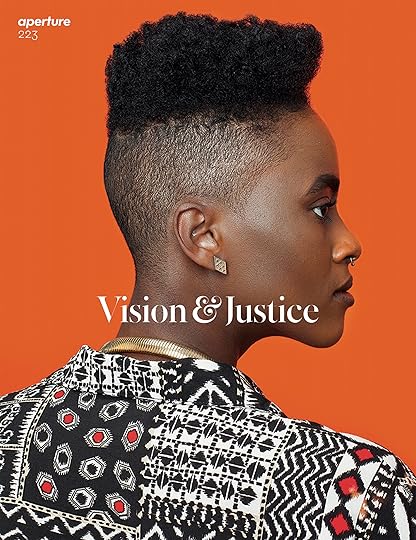
Boot: I remember thinking at Aperture, in the mid-2010s, Now we can see the new shape of photography, we don’t need to keep asking what it is. So, what next? This was around the time of the early Black Lives Matter demonstrations. And because photography was so central to them—Black Lives Matter mobilized via evidence of police killings caught on cell-phone cameras and distributed virally on social media—at Aperture, we felt we had some responsibility to speak to issues of inequality in the U.S. By then, Aperture magazine had published the “Queer” issue (Spring 2015), so we had already begun looking at the evolving role of photography in society, and inviting a more diverse group of authors to feature centrally into the story. But it was “Vision & Justice” (Summer 2016), guest-edited by Sarah Lewis—which includes selections from your Birmingham Project (2012–13)—that became the most conspicuous landmark in our own evolution. (The issue is now in its fourth printing.) That was the start of a journey, and there was never any going back.
Since then, we have made part of our purpose to serve as a platform for more diverse voices and their contributions to our social imagination. I know we are just a small corner of this, and I don’t want to be overdramatic about it, but it feels like the effect of Black Lives Matter on photography in America has been absolutely huge, perhaps as big an influence as the launch of the iPhone.
Bey: Well, the field has never been monolithic, so I think it depends on which segment of the field you’re looking at. Certainly, the fact that everyone who has a phone is now a producer of images has been hugely impactful, and has created a major cultural shift in the past two decades. And in the hands of citizens who are witnessing—or are sometimes the very victims of—police violence, it has created a means for exponentially amplifying this type of racist violence in conjunction with social media, since it is social media that allows these images to become visible, even ubiquitous.
I would say it goes both ways. Photography has had a huge impact on the Black Lives Matter movement as a mass mobilization tool, through which huge numbers of people can see these acts of violence against the Black body on their phone or computer screens. What really amplified the effects of that fact was the COVID-19 pandemic, which basically forced everyone into confined social isolation in a way that much of their interaction with the world was, in fact, taking place on social media. Under these circumstances, with few of the day-to-day distractions that normally crowd our lives, these images became magnified tenfold, first with the harassment of a Black birder, Christian Cooper, in Central Park, threatened by a white female citizen; quickly followed by the images of a white father and son in a pickup truck on the back roads of Georgia hunting down Ahmaud Arbery, a Black jogger, and then killing him while their friend, who followed in his own truck, filmed the entire incident for sport.
And then, finally, all of America got to see, on their screens while isolated at home, the images of George Floyd being killed in broad daylight, while a seventeen-year-old Black teenager, Darnella Frazier, filmed the footage on her phone. The extraordinary extent to which that brave young Black woman was able to stop, lift her phone, compose with a steady hand, and not flinch or shake, even as the police officer killing Floyd looked right into the lens of her phone suggests, to me, the ways in which people have been primed by the prevalence of images to be sophisticated producers of those images.
So, I think photography, and camera phones, has made people even more aware of the power of images which, in turn, has caused them to become more engaged producers, viewers, and responders to these images. The Black Lives Matter movement expanded exponentially during the pandemic, when that footage of Floyd’s killing was front and center on everyone’s screens in a way that was inextricable and undeniable. Frazier knew exactly how to make that footage go viral via social media. As a consequence, even more people—particularly non-Blacks—were forced to respond viscerally to these images by taking to the streets, demanding the police be held accountable and that Black Lives indeed do matter. So, yes, images are very much prevalent and much more catalytic to the Black Lives Matters movement.
 Dawoud Bey, Mary Parker and Caela Cowan, 2012, from The Birmingham Project
Dawoud Bey, Mary Parker and Caela Cowan, 2012, from The Birmingham ProjectBoot: Our interests coincided with the rise of new work and new attitudes—by Black, women, queer, and transgender photographers—taking photography by the scruff of the neck and giving it a good shake. It felt like a professional viewing class telling the stories of others was being displaced by photographers telling their own stories and shaping new identities in pictures. The energy of photography now is at that spot where great picture-making meets passionate argument around issues of representation and social justice.
Bey: I think Aperture and Aperture magazine have done very well in continuing to be an organization and publication that has a place in those foundational histories (as biased as they may have been), while also increasingly and forcefully remaking itself as a publication that is also reflective of the broader social conversations that have been taking place within various marginalized and excluded communities and populations, making the publication a place for a more representational kind of inclusion, as opposed to a more insular and exclusive platform for a particular kind of photographic practice.
Earlier publications may have included work about some of those communities, but through images that were seldom—if ever—made by those who are actually producing work from inside those populations. That has been a very important shift—that these communities are the producers and authors of work that reflects their experiences and are, in fact, the authors of their own cultures. The old model was usually that a white photographer, like Bruce Davidson (with East 100th Street, 1970) or Eugene Richards (with Cocaine True, Cocaine Blue, 1994), was the visual authorial voice of those Black and Brown communities. In an earlier time, Paul Strand photographed in Mexico and Ghana, without most people having a broader awareness that the African continent and Mexico also had their own rich traditions of photography.
It’s also important to note, in the more recent inclusion of diverse voices in Aperture magazine, that work coming out of those communities does not subscribe to any orthodoxy, that it is as conceptually rich and varied as work being produced anywhere else. In the end, Aperture magazine has become a platform for redefining the notion of image-making in a more inclusive America, and then placing that alongside a global conversation.
 Dawoud Bey, A Young Woman Between Carrolburg Place and Half Street, Washington, D.C., 1989
Dawoud Bey, A Young Woman Between Carrolburg Place and Half Street, Washington, D.C., 1989Boot: What does the arc of your career over the same period look like?
Bey: For me, as an artist working inside of the medium whose own work stems from my coming of age during the social tumult of the late 1960s, a lot of the issues that have again come to the forefront over this past decade have actually been present for a very long time. The year 2020, in a way, feels like 1969 redux. Only now, the struggle around these issues of institutional access, police violence (which also sparked rebellions in Black urban communities across the country in the 1960s) have been joined by a much more diverse population. So, I see the arc as much longer than a decade, and these issues of representation and social justice are ones that have been embodied in my own work for over four decades. As I told a young Black photographer recently, each generation gets to inherit the struggle and find their own terms of engagement. It’s been good to see Aperture take on the role of an inheritor of that struggle as well. I hope, as it continues forward, that Aperture does not retreat. We all have a role to play in being active and engaged citizens in our respective fields.
 Kwame Brathwaite, Sikolo Brathwaite, African Jazz-Art Society & Studios (AJASS), Harlem, ca. 1968
Kwame Brathwaite, Sikolo Brathwaite, African Jazz-Art Society & Studios (AJASS), Harlem, ca. 1968Courtesy the artist and Philip Martin Gallery, Los Angeles
Boot: I feel there has been a distinct arc to our work over this period, and I like the way our arc spawned subsidiary arcs too! The way that the “Vision & Justice” issue led to a thread of projects about race, gender, sexuality, and the idea of beauty: from the magazine’s “Elements of Style” issue (Fall 2017), to the book and exhibition Kwame Brathwaite: Black Is Beautiful (2019) and the book and exhibition The New Black Vanguard: Photography between Art and Fashion (2019). All these projects are in conversation with each other.
Meanwhile, I would say Aperture editors are very aware of our past, our institutional history, and the endeavors of those who built it—aware of the points when we have had a positive impact on the story of photography, often when we were boldest in presenting photographers who act as cultural agents of change. And aware, too, of what we didn’t do that we should have.
Given the depths of your engagement with photography over several decades, what have you made of Aperture over the years before 2010? There are many wonderful photographers around, whose story about Aperture is knocking at our door and not being let in; I hope that isn’t yours.
Bey: I’ve been making photographs seriously since the mid-1970s, and started going to galleries to look at work almost from the outset. So it didn’t take too long for Aperture to come on my radar, since I certainly knew and admired the work of Paul Strand, and knew the work of Minor White, and also had something of a front-row seat to the A. D. Coleman vs. Minor White contretemps from regularly reading the Village Voice—which, for anyone interested in progressive politics, along with art and culture, was mandatory weekly reading. And certainly by that time, I had a more passing knowledge of Beaumont Newhall, another Aperture founder, through his History of Photography (1949).
So when Aperture opened in the townhouse on East 23rd Street in 1985, a visit seemed in order, now that they were not just a publication and an organization, but had a publicly accessible space. Visiting that space in 1984 felt very much like my early visits to Marlborough Gallery in the mid-1970s, like I was crossing a social and cultural divide. I was acutely aware that I never saw another Black person in the gallery space while I was there. As it was, it almost felt like entering someone’s home, since one had to be buzzed in and then proceed up the stately, narrow staircase to the second-floor gallery. After those initial visits, I started attending openings, again always feeling that I had momentarily crossed over into another world, but focusing my attention on the photographs, which is what I had come to see. And at the openings, I usually saw only one other Black person, and it was the same one each time, someone whom I eventually came to know and am still friends with. But back then, we would catch sight of each other at those openings with the same mixed feelings of mild discomfort and feigned nonchalance. And yet, our interest in photography kept us coming back.
Boot: What other institutions or spaces were important to you at the time?
Bey: It was pretty clear that the communities that I had become very much a part of—the Studio Museum in Harlem (where I had my first solo museum exhibition in 1979), the Schomburg Center for Research in Black Culture, Just Above Midtown, and the Cinque Gallery, to name a few—did not intersect or overlap at all with the community that frequented Aperture. Those African American centered institutions formed a network of support that sustained artists of color in New York at all levels, from the emerging to the established, at a time when they were shut out of the mainstream. The Studio Museum, in particular, was the center of my community, the place where we all found each other. But I was determined that that milieu was not going to be the extent of my engagement with photography. And so, in spite of hardly ever seeing anyone that looked like me in that space, I continued to frequent Aperture.
 Dawoud Bey, Hillary and Taro, Chicago, 1992
Dawoud Bey, Hillary and Taro, Chicago, 1992All photographs by Dawoud Bey © the artist
Boot: How did you finally connect with Aperture?
Bey: I was surprised, one day, to get an email from one of the editorial staff at Aperture saying that someone (a mutual friend, whom I knew from the Studio Museum in Harlem’s administration) had told them they should take a look at my work. The email went on to ask, “What kind of work do you do, landscapes?” I was, to put it mildly, bemused, since my entire thirty-year output at that point had been spent making work that was almost entirely portrait-based, and I’d had a number of both mainstream museum and gallery exhibitions. But I set a date for a meeting to show them the project I was in the midst of, Class Pictures (2002–6), which they were immediately interested in and committed to publishing at that first meeting. Class Pictures was then published some two years later, after I spent an additional year making the work.
So no, I wasn’t turned away, nor had I been knocking on Aperture’s door. But it was certainly an auspicious beginning. What I hadn’t given much thought to, before other Black photographer colleagues pointed it out to me, including those who were “not let in when they knocked at the door,” was that with the 2007 publication of my book Class Pictures, I became only the second Black photographer to have a book published by Aperture. The publication of the “Vision & Justice” issue of the magazine, and the subsequent publication of books by LaToya Ruby Frazier, Kwame Brathwaite, Deana Lawson, and now Ming Smith (along with the publication of The New Black Vanguard), was a moment for me when, finally, those two communities that I’ve long navigated between found some significant common ground. It’s a breakthrough moment for Aperture—a little late in the day, for sure, but hopefully, the organization will continue to move forcefully forward in reflecting the true diversity of the field in a way that its history has not always reflected. It’s not only good cultural citizenship; it’s good business, too, as the runaway success of “Vision & Justice” made clear.
2020 PhotoBook Awards Shortlist: PhotoBook of the Year
Paris Photo and Aperture Foundation, in partnership with DELPIRE & CO, are pleased to present the shortlisted books for the 2020 Paris Photo–Aperture Foundation PhotoBook of the Year Award.
The PhotoBook of the Year category highlights excellence in bookmaking, and this year’s shortlist includes a wide range of topics and photographic styles—from Samuel Fosso’s long-awaited monograph of self-portraits, and an arresting collaboration between Dyba and Adam Lach, to this year’s winner, Gloria Oyarzabal’s exploration of colonialism and white feminism in West Africa.
This year’s shortlist was selected by a jury comprised of Joshua Chuang (New York Public Library), Lesley A. Martin (Aperture Foundation), Sarah Hermanson Meister (MoMA), Susan Meiselas (photographer, Magnum Foundation), and Oluremi C. Onabanjo (independent curator and historian).
 Carolyn Drake from Knit Club (2020)
Carolyn Drake from Knit Club (2020)Courtesy the artist and TBW Books
Knit Club by Carolyn Drake (TBW Books, Oakland, California, 2020)
The mystique that shrouds Magnum photographer Carolyn Drake’s Knit Club is first encountered via its worn-looking cover and musty green-tinted edges; it’s easily mistakable for an old family album. Tucked inside is a series of richly reproduced images that invite you into a community of women with whom Drake embedded herself, developing familial bonds through shared time, wisdom, and secrets. Sarah Meister says, “The seductiveness of the images and the different modes of picture making and subjects makes for a gratifying photobook experience.” Alluding to the Southern Gothic literary form of William Faulkner, Drake weaves together a series of domestic still lifes and portraits into an alluring narrative that both illuminates and obscures. Meister confirms, “The secret parts of being a woman in the world, that men can never understand, are rendered in such a way that only heightens the mystery.”
 Samuel Fosso, SM17, from the series 70’s Lifestyle, 1975–78
Samuel Fosso, SM17, from the series 70’s Lifestyle, 1975–78Courtesy the artist, The Walther Collection, and JM Patras, Paris
Autoportrait by Samuel Fosso (Walther Collection and Steidl, New York, and Göttingen, Germany, 2020)
Samuel Fosso: Autoportrait is the long-awaited and overdue career survey of one of the most unique figures in African photography. Fosso’s conceptual self-portraiture raises themes of sexuality, gender, and self-representation, as the artist inhabits and pays tribute to political icons such as Angela Davis and Martin Luther King Jr., among other Black personas. Autoportrait captures the multitude of his self-expression in what Joshua Chuang describes as a “cohesive, convincing, and definitive volume of Fosso’s most significant work.” Edited by the late Okwui Enwezor—a preeminent curator, critic, and scholar of African photography—this book brims with generously presented images that draw full attention and magnitude to Fosso’s work. Autoportrait “fills a significant gap,” according to Chuang, presenting the artist’s most striking images in a refreshing and comprehensive volume. This landmark monograph exemplifies the full range of the photographic medium in relation to self-presentation, archetypes, and visual culture at large.
 Takashi Homma, Chernobyl #9, 2017
Takashi Homma, Chernobyl #9, 2017Courtesy the artist
Symphony—Mushrooms from the Forest by Takashi Homma (Case Publishing, Tokyo, 2019)
In 2011, just six months after the Fukushima Daiichi nuclear disaster, Japanese photographer Takashi Homma began a series photographing radioactive mushrooms gathered in the forests of Fukushima, before expanding the series to Scandinavia, Chernobyl, and Stony Point, New York. Symphony—Mushrooms from the Forest compiles previously published and new selections from this project. Homma’s primary subjects are photographed against plain white backdrops; interspersed among these are details and landscapes of the various forests in which they were found. “The book is beautifully executed and, for me, revealed something new with each reading,” Chuang says. The work provides “a quiet counterpoint to the sea of visually and emotionally raw imagery that emerged from the tragedy in Fukushima.” Oversized, tactile, and handsomely designed, Symphony—Mushrooms from the Forest is an “oblique and subtle treatment of a freighted subtext through the unexpectedly expressive form of freshly foraged mushrooms,” Chuang praises.
 Thomas Kuijpers from Hoarder Order (2020)
Thomas Kuijpers from Hoarder Order (2020)Courtesy the artist
Hoarder Order by Thomas Kuijpers (Fw:Books, Amsterdam, 2020)
In 2014, Thomas Kuijpers purchased a painting depicting the iconic pre-9/11 Twin Towers in New York City, inspiring him to begin collecting images and objects of the towers in an effort to trace the visual representation of politics via this landmark scene. Hoarder Order gathersa range of materials depicting “before” and “after,” now infused with alternate meanings—tourist memorabilia, newspaper clippings, screenshots, movie posters, postcards, and other vernacular material—in a small yet densely elegant 560-page book. Each object is isolated on a page or fills the spread, taking the viewer through a visual timeline of events that resonate outward from the semaphore of these now iconic buildings. The images are printed on Bible-thin paper that allows the viewer to experience a layering of signs, creating a visual metaphor for both what comes next and what has already happened. Susan Meiselas states, “These are the pages of our destiny unfolding, and we can go back and forth—wishing we could return to a different time.”
 Adam Lach, Poland For Poles the family is sacred, Wegierki, Poland, June 14, 2009
Adam Lach, Poland For Poles the family is sacred, Wegierki, Poland, June 14, 2009Courtesy the artist
How to Rejuvenate an Eagle by Adam Lach and Dyba Lach (Self-published, Warsaw, 2020)
A collaborative project between journalist Dyba Lach and photographer Adam Lach, How to Rejuvenate an Eagle examines contemporary Polish history and culture. For three and a half years, the duo traveled extensively throughout the country, conducting over seventy interviews and photographing people and landscapes. Throughout the resulting sequence of black-and-white photographs, excerpts from these interviews are interspersed via quarter-page, red tip-ins. “These textual interventions offer a really elegant interpretation of how one can incorporate multiple voices and perspectives into the making of a contemporary photobook,” Oluremi C. Onabanjo comments. Adam Lach’s arresting photographs are dynamically sequenced and depict a nation deeply conscious of its own historical, geopolitical, and economic transformations—while also struggling with the profound divisions and stereotypes rooted in longstanding cultural schisms.
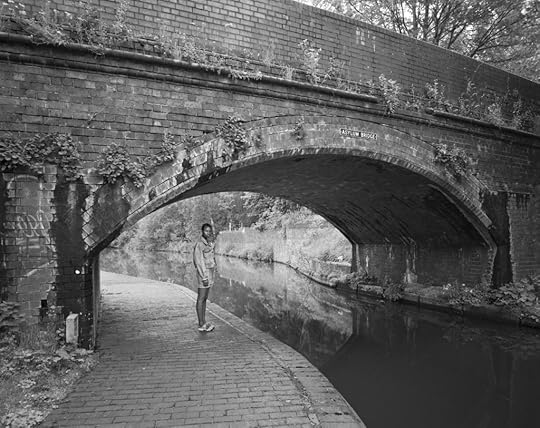 Edgar Martins from
What Photography & Incarceration Have in Common with an Empty Vase
(2020)
Edgar Martins from
What Photography & Incarceration Have in Common with an Empty Vase
(2020)Courtesy the artist
What Photography & Incarceration Have in Common with an Empty Vase is a two-part photobook by Portuguese photographer Edgar Martins, created in collaboration with inmates at a prison in England’s Midlands region. In this densely packed project, Martins wrestles with crucial questions about the representation of the experience of incarceration. The two volumes are packaged together in a plastic police evidence bag. One is a facsimile of pages from an incarcerated person’s diary; handwritten entries express the frustrations and anxieties of undergoing trial and daily life in prison, occasionally layered with a photograph or drawing by either the author or Martins. “The complementary volume sets up an uneasy juxtaposition,” Meister cautions—opening up questions of truth and fiction, or the equivalencies between shooting a camera and a gun. Martins brings together a heady mix of studio and archival images, documents, and other interventions “to complicate or render impossible any simple read of the subject,” Meister observes.
 Strenči Studio Archive from Glass Strenči (2020)
Strenči Studio Archive from Glass Strenči (2020)Courtesy of the Latvian Museum of Photography
Glass Strenči by Orbita (Orbita and the Latvian Museum of Photography, Riga, 2019)
In 1909, Dāvis Spunde began a photography workshop in the Latvian village of Strenči that he and his successors continued through 1950, producing almost 13,000 glass-plate negatives now housed in the Latvian Museum of Photography in Riga. From this archive, editor Anna Volkova and designer Alexey Murashko, members of the creative collective Orbita, selected almost one hundred images, taken between 1930 and 1950. Group portraits of families and laborers, picnics and parades, hospitals, farmlands, and newly installed utility poles, immerse the viewer in the evolving rhythms of life before, during, and after the wars. Each image is presented full-bleed, with an occasional gatefold, luminously printed on a velveteen, uncoated paper. “In the accompanying essay, historian Kirill Kobrin describes the glimpses of life in this village as ‘fragile, strange, attractive, painful, and damned,’” notes Lesley Martin, “which perfectly captures the atmosphere evoked in this mesmerizing selection and presentation of archival images.”
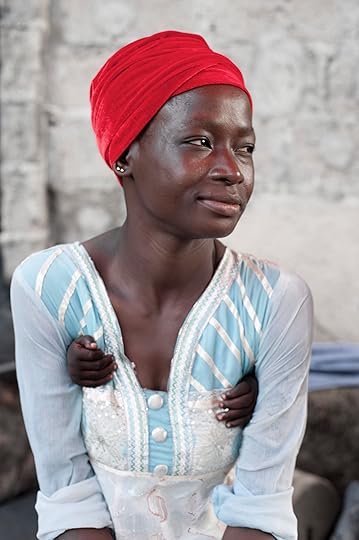 Gloria Oyarzabal from Woman Go No’Gree (2020)
Gloria Oyarzabal from Woman Go No’Gree (2020)Courtesy Editorial RM
In Woman Go No’Gree, Gloria Oyarzabal asks, “Can we assume social relations in all societies are organized around biological sexual differences?” Oyarzabal tackles this question by exploring colonialism and white feminism in West Africa through the use of found imagery, archives, and her own photography. Inspired by the texts of Oyèrónkẹ́ Oyěwùmí and Ifi Amadiume, Oyarzabal raises questions about the effects of the Western framework of gender and feminism, but not without addressing her own whiteness and privilege—implicating herself in bold green text on the front cover. “What is striking about the declaration on the cover is an acknowledgment of her whiteness, privilege, and mental colonization,” notes Susan Meiselas. “She dares to draw together archival imagery with a contemporary eye, leaving us with layers to unpeel and codes to decipher via extended captions.” In this beautifully and thoughtfully crafted book, Oyarzabal challenges the viewer to engage with their own biases and assumptions.
 Luis Carlos Tovar from
Jardín de mi Padre
(2020)
Luis Carlos Tovar from
Jardín de mi Padre
(2020)Courtesy Editorial RM
In 1980, Luis Carlos Tovar’s father, Jaime Tovar, was abducted by FARC (Revolutionary Armed Forces of Colombia). The only evidence that he was still alive was a “proof of life” Polaroid sent by the group to Tovar’s family. That Polaroid acts as a prompt for his book Jardín de mi Padre, which offers a poetic, in-depth reflection on memory and the legacy of the past. Rather than a specific narrative rooted in photographic logic, the book weaves together a mixture of photographs, cyanotypes, and archival ephemera to create a disorienting but riveting visual essay that unfurls the medium in a generative and powerful way. “The journey one takes—whether in regard to memory, family, state violence, or trauma—is one that complicates and collapses our understanding of the past and present,” states Oluremi Onabanjo, “which is important for our understanding of what photobooks can do in 2020.”
 Untitled from Hayal & Hakikat (2020)
Untitled from Hayal & Hakikat (2020)Courtesy the artist and Istanbul University Library of Rare Books and Special Collections
Hayal & Hakikat (Dreams & fact) is a reissue of a previously self-published artist book, a compelling intervention into a series of portraits of prisoners found in the archives of the late nineteenth-century Ottoman sultan Abdul Hamid II. The book is uniquely bound via a triple-hinged spine that allows the viewer to unfold and compare the individual sets of images contained within. Each set of top-bound pages presents a detail of prisoners’ hands—classified according to those that are chained and those that are not. Faces are cropped; the focus remains on the hands, echoing a theory that the sultan commissioned these photographs to establish a prisoner’s guilt, believing this could be determined by the length of their thumb joints. “Centering the work on this arbitrary and idiosyncratic means of determining an inmate’s fate speaks obliquely to the current uncertain state of the individual in Turkish politics,” Martin proposes. “It’s also a poetic example of how archives can be reinterpreted and reinfused with both fact and fiction.”
These text were originally published in Issue #18 of The PhotoBook Review.
The 2020 Paris Photo—Aperture Foundation PhotoBook Awards Shortlist Exhibition will be on view at DELPIRE & CO through December 24, 2020. Read more about the 2020 PhotoBook Award Winners here.
2020 PhotoBook Awards Shortlist: First PhotoBook
Paris Photo and Aperture Foundation, in partnership with DELPIRE & CO, are pleased to present the shortlisted books for the 2020 Paris Photo–Aperture Foundation First PhotoBook Award.
The First PhotoBook category highlights the creativity and commitment to bookmaking by photographers publishing for the first time. This year’s shortlist includes a wide range of publications—from June Canedo de Souza’s self-published title about family separation, and Efrem Zelony-Mindell’s expansive look at queerness in relation to the body, to this year’s winner, Buck Ellison’s thoughtfully crafted book about the visual language of privilege.
This year’s shortlist was selected by a jury comprised of Joshua Chuang (New York Public Library), Lesley A. Martin (Aperture Foundation), Sarah Hermanson Meister (MoMA), Susan Meiselas (photographer, Magnum Foundation), and Oluremi C. Onabanjo (independent curator and historian).
 Stephen Berkman, Humboldt’s Parrot, 2020
Stephen Berkman, Humboldt’s Parrot, 2020Courtesy the artist
Predicting the Past—Zohar Studios: The Lost Years is a rare example of where more actually is more. “Absurd—just completely over the top,” says Sarah Meister. “This book has plenty of signals why it is not what it purports to be from the start.” Its oversized scale and heft resembles a compendium publication for a nineteenth-century studio photographer’s lifetime achievement, precisely what the artist Stephen Berkman aims to evoke with his antiquated glass-plate work and the fictive Zohar Studios—similar to artist Joan Fontcuberta’s elaborate trickster approach. Meister notes, “The minute you realize that what you’re looking at is constructed and new, you find incredible humor.” With images like a man selling a trunkful of merkin samples, Berkman’s wit seems inexhaustible. Meister concludes, “If the immense ambition and scale of this work were anything less, it would not achieve the same impact.”
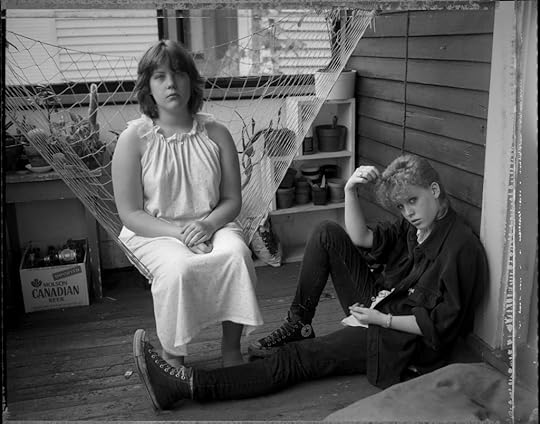 Judith Black, Johanna and Laura, June 5, 1983
Judith Black, Johanna and Laura, June 5, 1983Courtesy the artist
Pleasant Street by Judith Black (STANLEY/BARKER, Shrewsbury, United Kingdom, 2020)
In 1979, Judith Black moved with her children to Cambridge, Massachusetts, where she knew no one. She began to turn her lens toward her children and the dilapidated apartment they shared. Pleasant Street is “a gentle chronicle of a family over two decades,” says Susan Meiselas, one that takes the viewer through Black’s life as a mother watching her children grow up. Organized chronologically, we watch through Black’s eyes as her children grow older, become taller, change hairstyles, learn to express themselves, and eventually, become adults. In some cases, Black turns the camera on herself, documenting her own changes alongside her children’s. “The balance of the family members not only looking at themselves, but at each other, seems quite perfect,” Meiselas concludes. The book is full of photographic gems underscored by the rich black-and-white reproductions of each image, presented with a generous border and without titles; handwritten captions appear at the back of the book.
 Maryna Brodovska from My Dear Vira (2020)
Maryna Brodovska from My Dear Vira (2020)Courtesy the artist
My Dear Vira by Maryna Brodovska (Self-published, Kyiv, Ukraine, 2020)
Maryna Brodovska’s My Dear Vira acts as a letter addressed to her childhood friend, who emigrated to the United States from Ukraine more than eight years earlier. The book feels like a Tumblr account in book form: candid snapshots from the friends’ lives together and apart are mixed together with screen captures from their social-media correspondence—sometimes with direct intervention from Brodovska in the form of collage or vividly colored scribbles, personal notes, and even a page of stickers. The book tells the story of their friendship and life-long bond in a playful, nostalgic, deeply intimate way. The story operates on multiple levels, considering not only their shifting relationship over time, but also the changing geopolitical relationship between their two countries. “The conflation of popular-culture reference points, embrace of bright colors, and dizzying design formats across spreads give a sense of confusion at moments—but in the best way,” Oluremi C. Onabanjo comments. “It’s a really loving, enjoyably strange rendition.”
 June Canedo de Souza, me deixa em pas, 2018
June Canedo de Souza, me deixa em pas, 2018Courtesy the artist
Mara Kuya by June Canedo de Souza (Small Editions, Self-Published, Brooklyn, 2020)
June Canedo de Souza’s Mara Kuya tells the story of a family separated by citizenship status. Taken over the course of seven years between Brazil and South Carolina, Canedo’s photographs present a striking, yet tender look into her family’s life and experiences, while also considering the often overlooked emotional and psychological toll caused by migration and separation. Encased in a bright yellow cover, Canedo’s lush and colorful photographs are interwoven with her own short written reflections. The resulting narrative and sequence unfold with a poetic impressionism, offering a deeply personal and nuanced perspective of this global experience. Onabanjo comments, “Mara Kuya considers the depths of what an intimate story can convey to us over the course of a photobook, as disclosed from the specific position of a Brazilian American woman, artist, and photographer.”
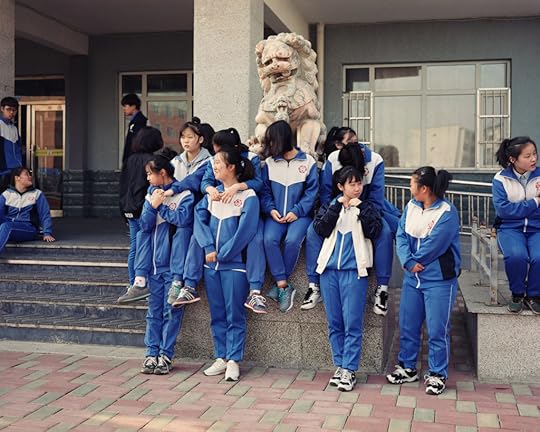 Ronghiu Chen from Freezing Land (2020)
Ronghiu Chen from Freezing Land (2020)Courtesy the artist
Freezing Land by Ronghui Chen (Jiazazhi Press, Ningbo, China, 2020)
Chinese photographer Ronghui Chen documents the uncertainty and isolation of young people amid the colorful but derelict landscape of China’s northeast region in Freezing Land, which investigates the once prosperous northeast region and the burdens and hopes of its youth. Chen used a video-sharing mobile app, Kuaishou, to find people willing to tell their stories. The resulting portraits—informed by photographers such as Alec Soth, Joel Sternfeld, and Zhang Kechun—capture a tangible mixture of hesitation, loneliness, and hope. Softcover and printed on uncoated paper, the book’s overall design feels suitably spare; the accompanying text appears in both Chinese and English. “Freezing Land is a standout debut by a promising contemporary Chinese photographer,” juror Joshua Chuang states. “Chen shows a side of the modern Chinese story that eludes cliché and helps round out our understanding of the country as a whole.”
 Ryan Debolski, Untitled, Oman, 2015
Ryan Debolski, Untitled, Oman, 2015Courtesy the artist
2020 Juror’s Special Mention: LIKE by Ryan Debolski (Gnomic Book, Brooklyn, 2020)
LIKE explores the experiences and relationships of migrant workers in Oman. But rather than focusing on the defining public image of poor working conditions, photographer Ryan Debolski depicts men finding agency and connection to the landscape of the beach and companionship in each other—they are as playful as they are introspective. A running dialogue of conversations via text message weaves together details of infrastructure and landscape and highlights the men’s digital communications with one another. LIKE refuses to dehumanize or mystify the laborer, and an accompanying essay by Jason Koxvold, “Raw Material: Capital and Exploitation at the Neoliberal Frontier,” contextualizes the work in the history of representation of labor in art. “The editing of this book is superb,” Chuang acclaims, “a compelling entrée into the roster of photobooks about lives otherwise lived out anonymously.”
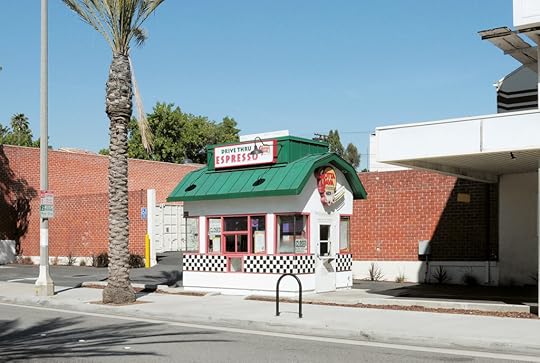 Caroline and Cryil Desroche from Los Angeles Standards (2020)
Caroline and Cryil Desroche from Los Angeles Standards (2020)Courtesy the artists and Poursuite
Los Angeles Standards by Caroline and Cyril Desroche (Poursuite, Arles, France, 2020)
Los Angeles Standards is a photographic portrait of Los Angeles, an iconic city in continuous flux and an experimental laboratory for twentieth-century architecture. Boasting 1,300 photographs taken between 2008 and 2012 by French architects Caroline and Cyril Desroche, the book is divided into fifteen typologies that compare and contrast defining archetypes of the city’s sprawling urban landscape—minimalls, billboards, freeways, parking lots, microarchitectures, and stilt houses, among others. This chunky brick of a book presents the work via a rigorous design that Chuang calls “a pleasure to flip through again and again.” The Desroches nod to the likes of Ed Ruscha, Learning from Las Vegas (1972), and Bernd and Hilla Becher. Los Angeles Standards both records and deconstructs the fragmented urbanism of Los Angeles—reflecting on its history and present identity, which, as Chuang states, “in its totality and density, gets to the heart of what makes Los Angeles distinct.”
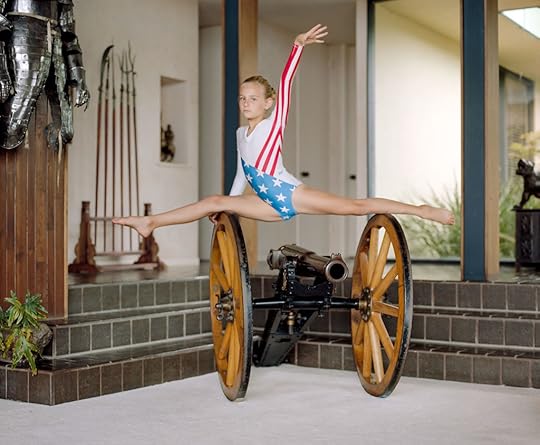 Buck Ellison, Sierra, Gymnastics Routine, 2015
Buck Ellison, Sierra, Gymnastics Routine, 2015Courtesy the artist and Loose Joints
Buck Ellison’s Living Trust investigates the visual language of privilege. Organized into chapters named by subject—such as “Daughters,” “Still Lifes,” and “Performance Fleece”—the book also includes two text contributions by Lucy Ives and Brooke Harrington. Photographs range from overtly staged Christmas cards and portraits, to still lifes of food and flowers and upper-middle-class activities, such as lacrosse, rowing, and golf. Taken together, these series offer a sustained, almost anthropological examination of the ways whiteness and privilege are both recapitulated and broadcast. “Living Trust emerged in our conversations as something that focuses really well on what many take for granted,” Onabanjo comments. “It is important to consider and make visible the silent violence and security of whiteness as it is continually maintained. This book does that precisely.”
 Charlie Engman from MOM (2020)
Charlie Engman from MOM (2020)Courtesy Edition Patrick Frey
MOM by Charlie Engman (Edition Patrick Frey, Zurich, 2020)
MOM is an intense collaboration between photographer Charlie Engman and his mother, Kathleen McCain Engman, who has been posing for her son since 2009. Containing a decade’s worth of portraits—and rich with fashion, art, and photo-history references—MOM possesses what Chuang calls “a strange magnetism and delirious complexity.” Through an exhaustive array of personas and performative situations, Engman and his mother experiment with discomfort, artifice, vulnerability, and familiarity. “Engman’s project has shades of the conceptual masquerade of Cindy Sherman, the outrageousness of Juergen Teller, and the critique of Boris Mikhailov,” Chuang says. MOM tests boundaries in a rigorous display of creative control, collaboration, and deep trust.
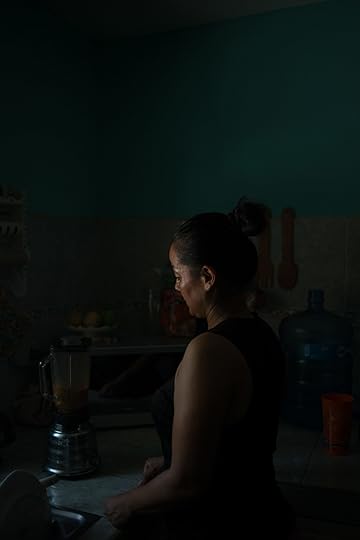
Zahara Gomez Lucini, Ana Griselda Montes Zapodaca prepares a Cheese Soup for his missing brother, Roberto, Los Mochis, Sinaloa, 2020
Courtesy the artist
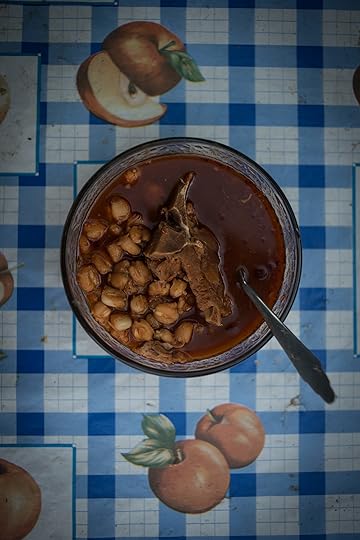
Shimmel Zohar, Pork Pozole for Roberto, prepared by his mother Yolanda Zapodaca Buelna. Roberto disappeared on July 10th of 2014, 2020
Courtesy the artist
Recetario para la memoria by Zahara Gómez Lucini (Self-published, Mexico City, 2020)
Can cooking be a form of activism? And can a recipe-driven cookbook also be considered a compelling photobook? Recetario para la memoria (Memory recipe book) stronglymakes the case that the answer is yes. Author Zahara Gómez Lucini serves as the project coordinator and photographer, working with Las Rastreadoras del Fuerte, a group of Sinaloense women dedicated to finding their missing loved ones. The book presents a series of recipes for the favorite dishes of various disappeared family members, interspersed with photos of the dishes and of the women midpreparation, and with recollections of those who are missing. “Recetario para la memoria proposes an unexpected interpretation of the photobook, in the process, tapping into questions of memory, state violence, and familial connectedness,” Onabanjo states. “Ultimately, it offers a portal for remembrance while engaging with an important element that people share with their loved ones who are no longer there—the food that brought them together.”
 Jessica Ingram, Memorial for Vernon Dahmer Sr. erected by his wife, Ellie, at the side of his store and home, Kelly Settlement, Hattiesburg, Mississippi, 2009
Jessica Ingram, Memorial for Vernon Dahmer Sr. erected by his wife, Ellie, at the side of his store and home, Kelly Settlement, Hattiesburg, Mississippi, 2009Courtesy the artist
Road through Midnight: A Civil Rights Memorial, by Jessica Ingram, is a deeply researched body of work that brings together photographs, oral histories, newspapers, FBI files, and other ephemera to tell the stories of individuals who were victims of racial violence in the American South. Released at a time of ongoing civil unrest, Ingram’s book is a stark reminder of America’s long racist history and an indication that what is happening today is not so different from the past. The photographs depict seemingly ordinary spaces—neighborhood sidewalks, motels, unmarked dirt roads—but, in the manner of Joel Sterneld’s On This Site: Landscape in Memoriam (Chronicle Books, 1996), depict places where heinous crimes against Black Americans took place. Ingram “looks to uncover and reveal the history of violence while searching to relearn histories that are buried and obscured,” notes Meiselas. No plaques or monuments mark these spaces; instead, Ingram “brings greater visibility to what is left for us to revisit and learn.”
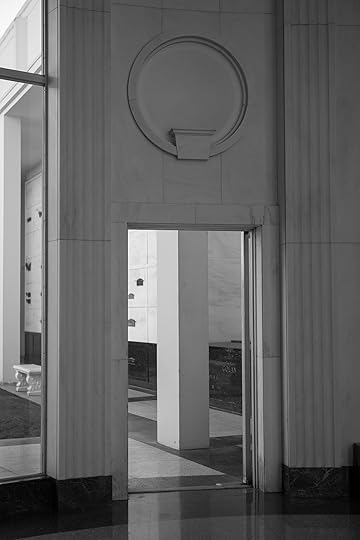 Janna Ireland, Hillside Memorial Park Mausoleum, 2019
Janna Ireland, Hillside Memorial Park Mausoleum, 2019Courtesy the artist
Regarding Paul R. Williams: A Photographer’s View is a visual duet between architect Paul R. Williams and Los Angeles–based photographer Janna Ireland. Popularly known as “Hollywood’s architect,” Williams designed buildings in his native Los Angeles with versatile range. His achievements broke racial boundaries: in 1923, as the first Black member of the American Institute of Architects; and in 2017, posthumously, as the first Black recipient of the prestigious AIA Gold Medal. Meister observes, “Ireland works in black and white, which softens but doesn’t erase the passage of time.” She is also sensitive to this past, approaching the creation of a lyrical photographic record of Williams’s achievements as both a personal and restorative tribute. “This book is a real discovery and delight,” says Meister, reflecting on the omission of Black artists’ and architects’ work in institutional collections, “a loving photographic tribute to the legacy of this important architect and an entry point into both Ireland’s and Williams’s work.”
 Francesca Leonardi, Villaggio Coppola, from ‘O Post Mio (2020)
Francesca Leonardi, Villaggio Coppola, from ‘O Post Mio (2020)Courtesy the artist
’O Post Mio by Francesca Leonardi (Postcart Edizioni, Rome, 2020)
’O Post Mio follows the life of Claudia and her two daughters, who live in Saraceno Park, an illegal building complex in the village of Coppola, near Naples, Italy. For eight years, Francesca Leonardi has photographed Claudia, capturing intimate family moments, struggles, and growth among a crumbling landscape. Leonardi beautifully captures Claudia’s struggle to be the mother she never had. The work is a lyrical, if unflinching journey into motherhood. “The photographer’s eye remains focused on the small moments—everydayness and the banal. Moments that are harsh but telling,” Meiselas notes. The book is intimate in scale, with a deep red cover and bound-in pink pages that include text by Claudia about her estranged mother. “The book intrigued me the moment I opened it and discovered two different kinds of readings—phrases and fragments, and a strong visual narrative,” states Meiselas.
 Yael Martínez, Self portrait with my daught and a presence of a hanging man, Taxco, Guerrero, Mexico, 2013
Yael Martínez, Self portrait with my daught and a presence of a hanging man, Taxco, Guerrero, Mexico, 2013Courtesy the artist/Magnum Photos
La casa que sangra by Yael Martínez (KWY Ediciones, Lima, Peru, 2019)
Based in Guerrero, Mexico, Yael Martínez has spent a considerable amount of his career thinking about and documenting the impact narco trafficking has had on his community and region. This project, however, brings home the violence and its effects in a personal and harrowing way, focusing on the murder of three of his brothers-in-law and the lives of their extended families as they struggle with these losses. “The work is threaded together with a profound sense of melancholia and loss,” notes Martin. The story is told bilingually from Martínez’s perspective, who speaks of nightmares and nausea in the aftermath of each murder, one of which was initially passed off as a suicide in jail. “These bite-size narratives hit hard,” Martin observes. “The book is rigorously constructed: from the carefully controlled and muted palette, to the interwoven text elements connecting personal traumas, to larger stories of endemic violence, corruption, and the increasing dominance of organized crime in the photographer’s homeland.”
 Sara Perovic from My Father’s Legs (2020)
Sara Perovic from My Father’s Legs (2020)Courtesy J&L Books
My Father’s Legs by Sara Perovic (J&L Books, New York, 2020)
In My Father’s Legs, Sara Perovic presents what Martin calls “a charmingly obsessive photographic meditation on the arbitrariness of what makes us fall in love.” For Perovic’s mother, it was her spouse’s tennis-sturdy legs, photographs of which appear intermittently throughout the book, reproduced in exaggerated, blue halftone on pink paper. Tennis may have made her father’s legs beautiful, but—as a singular line of text explains—as a child, the artist also felt that the sport took her father’s attention away from her. The rest of the book comprises photos the artist took of her boyfriend’s legs, crouched in a similar, ready-to-serve pose. “It’s a lighthearted riff on the typological, fetishistic way that photographs can be used to both commemorate and exorcise a personal fixation,” Martin suggests, “a mesmerizing little book that showcases how a simple conceptual project can be effectively framed via a rigorous design treatment.”
 Fabio Ponzio, Romania, 1992
Fabio Ponzio, Romania, 1992Courtesy the artist
East of Nowhere by Fabio Ponzio (Thames & Hudson, London, 2020)
East of Nowhere is a collection of photographs made by Fabio Ponzio over two decades throughout Central and Eastern Europe, before and after the fall of the Berlin Wall. Although Ponzio’s photographs depict countries on the brink of radical transformation and individuals struggling to survive, they are also filled with a vibrant, timeless energy. Meiselas observes that in these photographs, “elegance frames a respect for seeing time pass—the stillness, the waiting—hoping to be filled with the promise of an unknown future.” The book is an expansive documentation of turbulent times, yet sprinkled throughout are moments of joy and pleasure—a couple celebrating on their wedding day, a group of men enjoying a drink together. With sumptuous reproductions that showcase the richness of his photographs, Ponzio’s book leaves a lasting impression.
 Soumya Sankar Bose from Where the Birds Never Sing (2020)
Soumya Sankar Bose from Where the Birds Never Sing (2020)Courtesy the artist
Where the Birds Never Sing is a riveting story told in fits and starts, gathering together a series of images, documents, and textual commentary to address the 1979 massacre of Bengali refugees on Marichjhapi Island in Sundarban, West Bengal. Soumya Sankar Bose has worked with survivors of this traumatic event to recall and, at times, reenact memories of their survival for his camera. Their stories and the resulting images are buttressed by a number of small-scale facsimiles of various governmental reports tipped into the pages of the book—rare fragments of documentation that have survived an effort to destroy official evidence of the incident, one of the many violent repercussions that continue to follow, decades later, in the wake of Indian independence and partition. The results, per Martin, form a “strong example of book making in the subjective documentary mode.”
 Agnieszka Sejud from HOAX (2020)
Agnieszka Sejud from HOAX (2020)Courtesy the artist
HOAX by Agnieszka Sejud (Self-published, Wrocław, Poland, 2020)
HOAX, a crowdfunded book by Polish photographer Agnieszka Sejud, is an extraordinarily vivid barrage of wildly patterned, digitally tweaked street scenes and details. What’s “real” and what’s been tampered with is called into question on every page. The images are printed full-bleed on thick, hyperglossy paper. The spreads come nestled together in a clear vinyl envelope, and the unbound pages, like the images themselves, feel tantalizingly on the verge of falling into creative chaos. The sequence weaves together photographs of religious and national iconography with acid-color scenes of everyday consumerism—a mash-up of the sacred and the kitsch that is simultaneously seductive and seditious. “While this is more a thrilling short story than a novel,” comments Martin, “it effectively delivers a sly and visceral critique of the manipulation of contemporary values in Poland (and elsewhere) today.”
 Diana Tamane, flower smuggler, 2020
Diana Tamane, flower smuggler, 2020Courtesy the artist
Flower Smuggler by Diana Tamane (Art Paper Editions, Ghent, Belgium, 2019)
In Flower Smuggler, Diana Tamane edits together multiple suites of deceptively ordinary and eclectic photographs to describe her mother, grandmother, and great-grandmother. “This book hits all the right notes about the ways in which life and photography can intersect,” praises Meister. The artist collects colloquial images from her family and works with her relatives to jointly stage and create some of the images. In doing so, Tamane suggests how the meaning of photographs, their significance as artifacts of daily life and memory, can change profoundly over time. The concluding series, arguably the most poignant, is of rephotographed drugstore prints that were used by her great-grandmother to record her daily heart rate and blood pressure, with notations made on the back—and even the front—of the pictures. “This final statement in the book enriches Tamane’s endeavor while raising vital questions about why photographs matter today and to whom,” Meister notes.
 Dillion DeWaters, Refractory Mass, 2013
Dillion DeWaters, Refractory Mass, 2013Courtesy the artist
n e w f l e s h by Efrem Zelony-Mindell (Gnomic Book, Brooklyn, 2019)
n e w f l e s h is a curatorial exploration by Efrem Zelony-Mindell, both intimate and deeply expansive, that recasts concepts of queerness in relation to the body. This compilation encompasses a diverse set of practices, including abstract, studio-constructed, and digitally manipulated images by artists of various backgrounds and levels of experience. Meister explains, “Parts of the work might be seen as obliquely interested in questions of queerness, while others are more direct. Combined, they represent a truly personal perspective.” Zelony-Mindell’s first book in the role of curator as artist, n e w f l e s h draws parallels between bodily experience and photography—and their shared transformative potential to render forms of sexuality and identity free from societal constructs or physical limits. In its modest scale, the book is inviting as an object, with thoughtful binding choices that complement its vision: softcover, with an exposed and printed spine, and a reflective bronze shape on the cover that evokes a shimmering fleshy feel.
These text were originally were published in Issue #18 of The PhotoBook Review.
The 2020 Paris Photo—Aperture Foundation PhotoBook Awards Shortlist Exhibition will be on view at DELPIRE & CO through December 24, 2020. Read more about the 2020 PhotoBook Award Winners here.
Aperture's Blog
- Aperture's profile
- 21 followers



